WW2 American Cruisers
From Omaha to Worcester, two decades of conventional cruiser development (1918-47)
The term of ‘conventional cruiser‘ appeared in the late 1950s when the first missile cruisers were developed, notably in the US the “three T*” carrying ships, to describe a gun-armed vessel as primary armament. The USN had about ten cruiser classes, many sub-classes and two new one under construction during the war, for a total of about 60 cruisers. This was, by all margins, the largest cruiser force that ever roamed the oceans.
*Name given to the USN missile systems developed in the 1950-60s: Talos, Terrier, Tartar.
Even the Royal Navy, which inherited a large proportion of WW1 era cruisers, could not compete in terms of modern cruisers. The gargantuan Cleveland and Baltimore classes alone, by tonnage and armament, were made to outclass both in terms of quantity and quality, all the IJN could throw at the pacific fleet. The industrial steamroller so feared by admiral Yamamoto was unleashed in 1942. And this force was to be also present in the Atlantic north and south and the Mediterranean, or the northern sea to Murmansk.
Cruiser types and designations
Like all naval powers, USN cruiser design was framed by the successive treaties, starting with Washington in 1922, which fixed a standard for heavy cruisers, London I (1930) and London II (1935) which redefined the notion of cruiser and pushed for a new generation armed with 6-in guns with an heavy cruiser tonnage. During this period, the USN tested and operated no less than six cruiser types: The scout cruiser (Omaha class), the AA cruiser (Atlanta class, 5-in DP guns), the light cruiser (up to the Worcester, arguably “heavy-light”, but with 6-in guns), the heavy cruiser (from Pensacola to Des Moines, 8-in guns), and even the “large cruiser” (Alaska class, 12-in guns).
This was translated, but simplified into USN designators such as CL (light cruisers), CA (heavy cruisers), and CB (Large cruisers). The CL category was fairly diverse, since it contained the AA cruisers of the Atlanta class, up to the 14,000 tons (fully loaded) Cleveland and 18,000 tons for the Worcester class. The term “CA” was a fairly ancient one, dating back to the first USN protected and armoured cruisers, before WW1. The ‘A’ meant ‘armored’. Indeed, the Pensacola class in the 1925 started with CA24 and 25. The serie ended with the CL 147 USS Gary, last conventional cruiser laid down by the USN (cancelled in 1945).
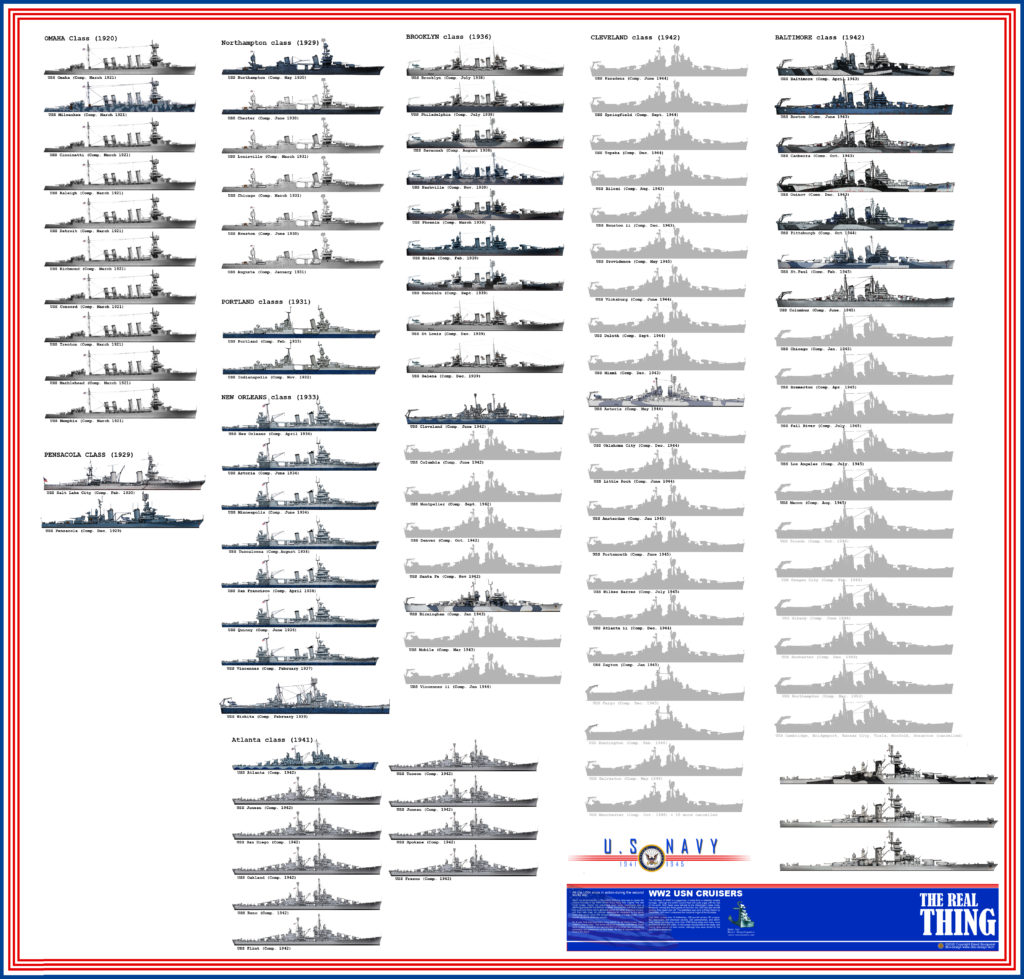
Poster of the WW2 USN Cruisers of WW2, extract from the upcoming “The Real Thing” about ww2 USN fleet.
A long vacancy: From Chester to Omaha
The USN present us to a radical, unusual fact: There has been a total ‘vacancy’, a gap in naval programs concerning cruisers. Indeed the last ones, the three Chesters, were launched in 1907. Before that, the USN had experimented with fleet armoured cruisers, built alongside pre-dreadnoughts, down to small unprotected cruisers not much larger than gunboats (and reclassified as such in WW1). This cruiser fleet had its moments of glory in 1989 but was largely discarded in 1930. For costs reasons after the wall street crash, tonnage limitations, and simply age. The CA2 USS Rochester was indeed going back to 1891. The case of France was not much different though. Her last cruisers dated back also from 1906. Main reasons behind this choice were:
1- Concentrating budgets on the new, promising but costly dreadnoughts
2- The apparition of 1,500 tons fleet destroyers that can act as scouts
3- Gunboats that can fill the role of cruisers for distant stations
4- Battlecruisers that can take on the tasks of former fleet cruisers.
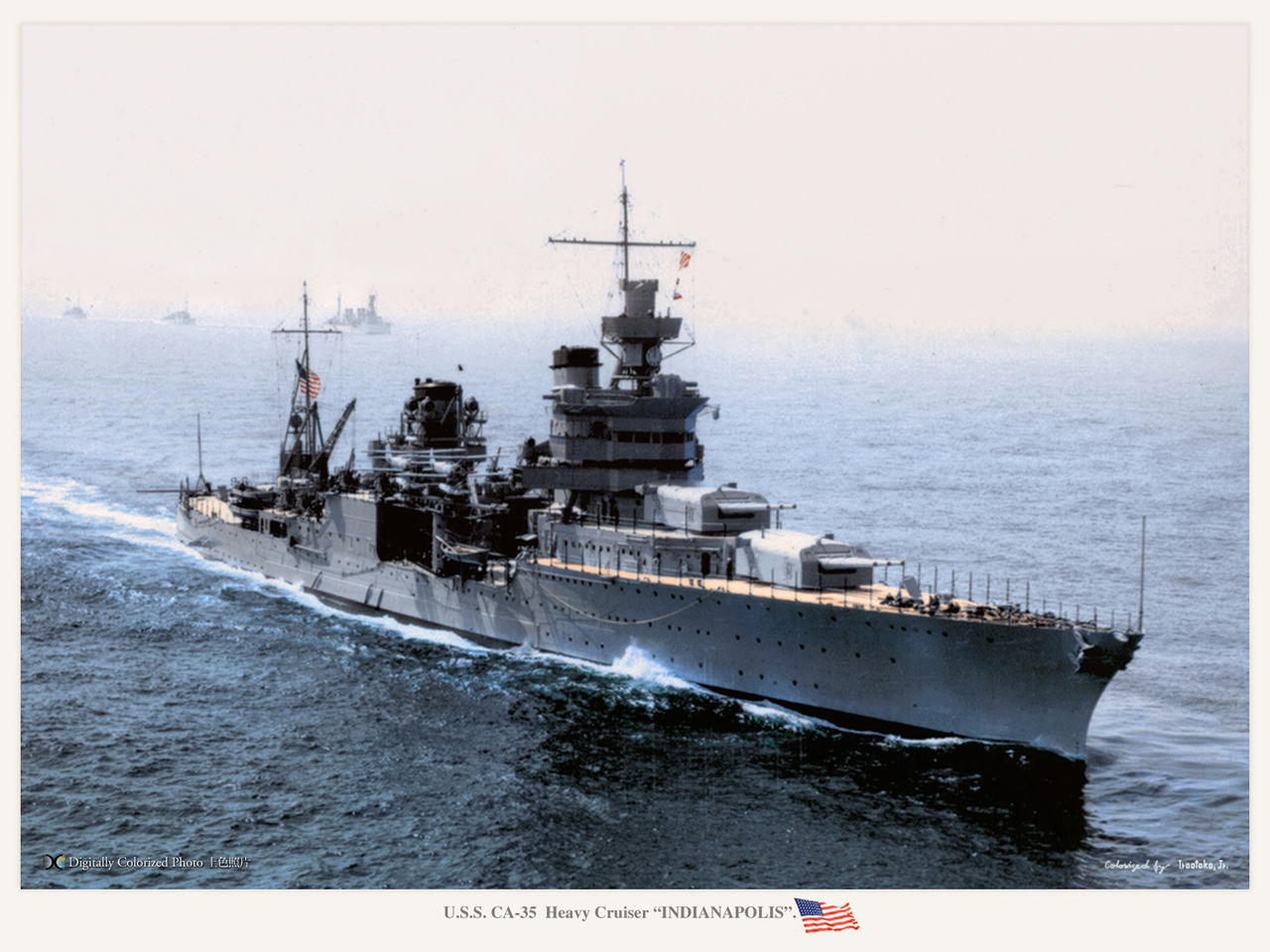
USS Indianapolis (CA35), colorized by Irootoko Jr.
These factors above are all verified in the case of the USN. The new dreadnought in particular, in a Navy deeply shaped by Alfred Thayer Mahan ideas, was to concentrate all the attention and credits. This was the perfect deterrent force of its day after all. So when the need emerged of a true scout cruiser, better armed than destroyers, and with a better range, usable as destroyer leaders, work started on a new design in 1917. Engineers could already take some inspiration on foreign designs, but also have a look on the Chester class.
The latter were very lightly built, yet large cruisers, displacing only 3,750 tons standard, armed with just two 5 in (127 mm)/50 caliber Mark 6 guns and an array of 3-in guns, good only for annoying torpedo boats. Speed was just 24 kn (27.6 mph; 44.4 km/h), which was at the time better than most older cruisers. Of course in 1917 they had been rearmed and refitted. The Omaha class were designed in observance of the tasks as the Chester (and a replacement), but upgraded to the new 6-in gun caliber to give an edge on any destroyer in service, and a speed to match the same destroyers, including those to be led as squadron leader.
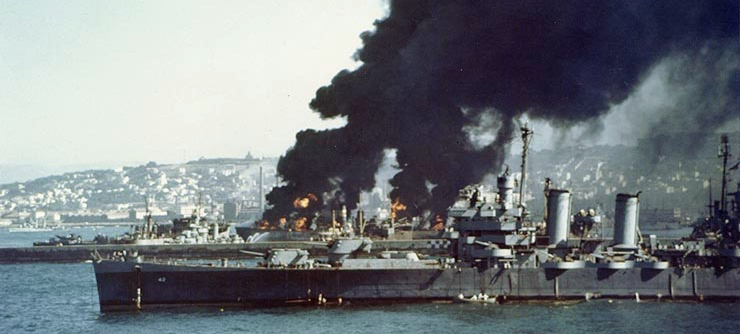
USS Savannah in Algiers, near a burning Liberty ship, fall 1942.
As a result the ships displaced twice as much, top speed rose to 33 knots, while artillery configuration showed the transitional state of artillery at that time, with twin turrets and casemate guns. These ten vessels came from Todd Dry Dock & Construction Co., Tacoma, Bethlehem Shipbuilding at Fore River Shipyard, Quincy and William Cramp & Sons in Philadelphia to lead destroyer squadrons for the Atlantic and Pacific fleets. However they were seen soon as displaying excessive top weight and being extremely wet.
Development of USN light cruisers
Soon the USN focused like many other navies on 8-in cruisers and will only return to “light” cruisers with the 6-in gun armed Brooklyn class nearly ten years after, hardly comparable to the Omaha. They were a new league in themselves. The latter were of a new standard which lasted for ten more years until 1947, through the Cleveland and sub-classes Fargo and later the revolutionary Worcester.

Meanwhile there was also the treaty ‘London II’ which imposed a vacancy on heavy cruisers. The Baltimore class were indeed designed and laid down from mid-1941, six years after the USS Wichita, inaugurating a new hull in complete departure from the last “classic” washington cruisers, the New Orleans.
The London treaty and Brooklyn class
The Brooklyn class opened a new entry in American cruiser design in general: The main change was the use of a roomier flush deck hull, to fill a niche in the unlimited number of cruisers that can fill the 143,500 long tons allocation. Therefore 10,000 tons cruisers armed with 6-in guns were now, if not desirable, realistic. Lighter designs such as the Omaha and Atlanta later proved they were quickly overweight and rolled badly.

So there was definitively a specification profiling for a stable, large hull, to be a stable gun platform, especially to house numerous, faster firing lighter guns. And indeed it was possible to cram five lighter turrets on such hull, triple ones, making for volleys in quick successions of twelve shells. HE shells in this configuration aimed at the superstructures raised interest in the admiralty.
The base design was the New Orleans, but in the end there were many changes. The class will comprise nine vessels, including a later sub-class called the St. Louis with improved engine protection. The hull in particular was retained for all subsequent cruisers, heavy or light.
The Omaha class AA cruisers
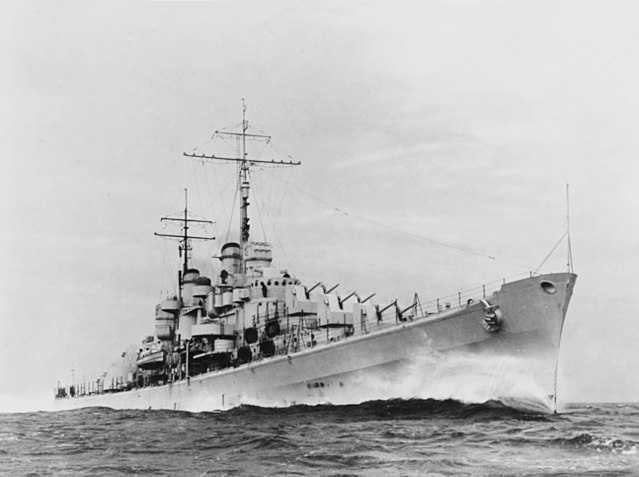
While the USS Helena, the last Brooklyn class cruiser was just being commissioned on 18 September 1939, replacement for the 20-years old Omaha class has been studied and plans settled that year. The program called for a fast scout cruiser or flotilla leader able to perform the same missions, on the same displacement, taking advantage of the tonnage limitations, but armed with a completely new battery.
Instead of the slower 6-in guns in barbettes, casemate and turrets, concerned about aviation and the need for specialized escort moved the design towards the brand new 5-inch/38 mounts in developments. These ships were able to bring to bear eight 5-inch/38 mounts, making for a sixteen shells with a rate of fire of 15 rpm, making for 17,600 pounds (8,000 kg) each minute. This was impressive in itself, but the system was way more efficient with radar-fuzed “VT” shells and Mk 37 fire control system and by 1943 the improved Mk 12/Mk 22 radar combination.
The USS Atlanta was laid down on 22 April 1940, followed by three more, and four more of the modified Oakland design. In this one, emphasis was put on lighter AA cover, sacrificing two 5-inch/38 mounts for 40 mm Bofors at the start, when it was made available. Indeed the first five ships had no 20 mm Oerlikon either at the start but a set of less popular 1.1-inch/75 (28 mm) quad “Chicago Piano” mounts.
This measure also save some top weight, making the ships more stable. Indeed in surface action near Guadalcanal, USS Atlanta and Juneau were lost. The concept was reminiscent (and partly inspired by) the British Dido class. The last one, USS Tucson was only completed by 3 February 1945, to be discarded in 1949.
The wartime standard light cruisers: Cleveland
There was a gap between the Cleveland class and the Brooklyn, which left time to perfect the design. The Cleveland class, together with its late sub-class Fargo (1945), was the most numerous cruiser class in recorded history so far. A record which was due to the need of mass-producing cruisers to make it for the losses, notably around Guadalcanal on the infamous ‘ironbottom sound’. They were closely modelled on the Brooklyns but improved in all directions, range, AA armament, torpedo protection, electronics, etc.
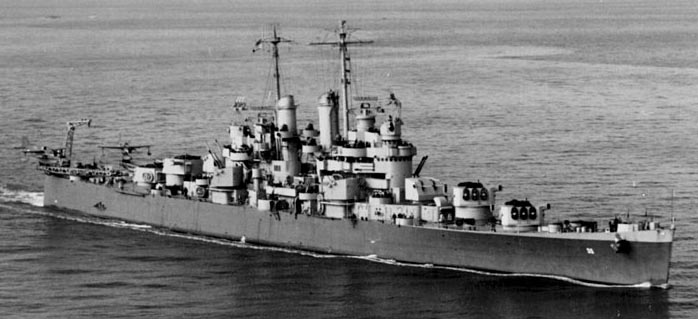
At the same time, simplifications in design were made, just like other classes like the Fletcher-class destroyers to reduce the delivery rate. No less than fifty two keels laid down, this was quite an achievement. Many cancellations followed however towards the end of the war and in total only twenty-one of these cruisers were completed during wartime.
Each one of the these displaced more than the Washington and London treaty allowed, automatically lifted in wartime: 11,744 long tons standard and 14,131 long tons (14,358 t). This left room for many improvements indeed. Compared to the Brooklyns, these cruisers came back to a more manageable four triple turrets (twelve guns), in favor of the new dual 5 in (130 mm)/38 caliber turrets.
They also had 40 mm Bofors and Oerlikon since the beginning. Superstructures were purely utilitarian, narrow to free more space abreast. The squared stern and rear aviation facilities were inherited from the Brooklyn design. The first two, Cleveland and Columbia, were laid down in the summer of 1940, while the last commissioned one of the proper Cleveland class was the USS Portsmouth (CL-102) in June 1945, however ten hulls were completed as fast light fleet aircraft carriers (CVL, Independence class), and many other converted after the war as hybrid missile cruisers.
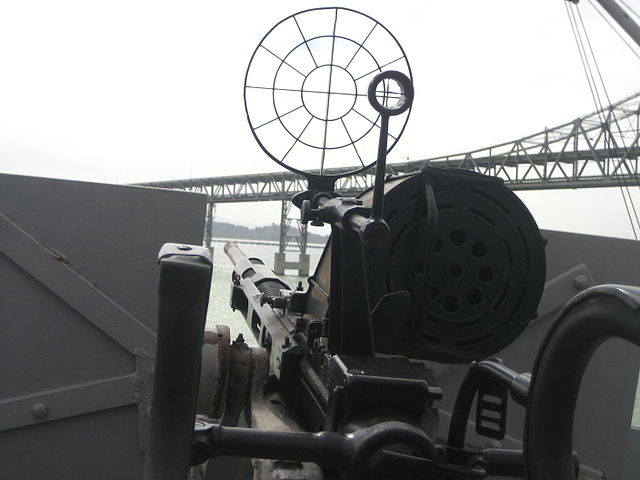
Armament of USN Cruisers
A big chunk has been treated already in sections such as the generic WW2 USN page and the WW2 Battleship section, notably for the 5-in (and dual 3-in/38), 3-in guns and light AA artillery. So we will focus here on the main caliber of USN Cruisers since the Omaha.
6″/53 caliber gun
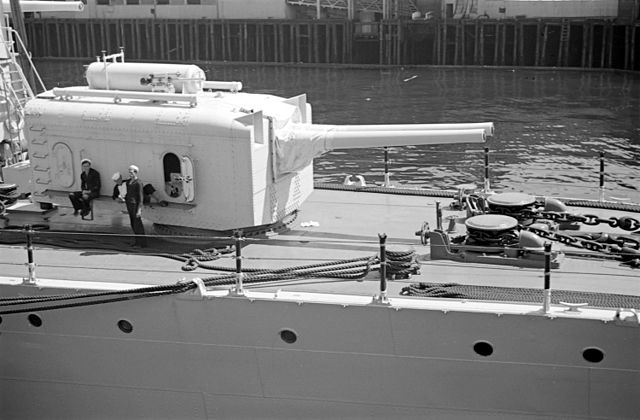
These purely surface guns were equivalent to 152 mm in the metric system. Each weighted ten tons. They were developed fro 1920 into the models Mk 12, Mk 14, Mk 15, Mk 18 on Mountings Mk 13, Mk 16, and Mk 17. 47 were forged, but the only ships they equipped eventually were the ten Omaha class cruisers. Others were planned for the Lexington class battlecruisers and South Dakota class super dreadnoughts, both cancelled. They fired a 105 pounds (48 kg) shell at 900 meters per second (2,950 ft/s) and up to 23,130 meters (25,295 yd) in maximal elevation.
6″/47 caliber gun
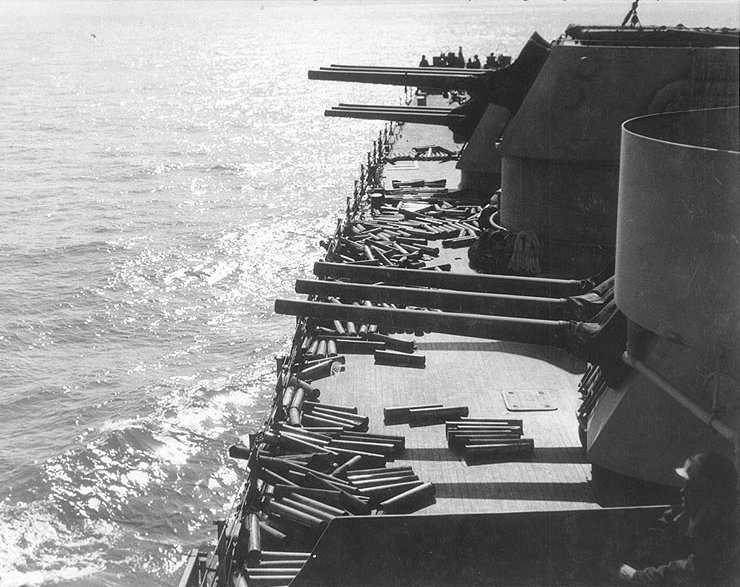
This was the model fitted on the triple turrets of the USS Brooklyn and the eight other ships of the class. Despite the shorter barrel, the Mark 16 fired a 130-pound (59 kg) AP projectile instead of 105 pds. The Mark 35 was considered a super heavy armor-piercing ammunition. The Mark 16 rate of fire was about 8-10 rounds per minute, improved on the Mark 16DP to 12 rounds per minute. The first model was used by the Brooklyns and sub-class St Louis, Cleveland and Fargo.
The 16DP was only use in the reconstructed USS Mississippi (AG-128) in the shape of a single twin turret, and the Worcester class in tailored automated dual-purpose turrets. The weaker version was the Mark 17, only capable of 5-8 rounds per minute and installed on the Erie class gunboats in single mounts. The Mark 35 round exited the barrel at 2,500 ft/s (760 m/s). Effective range was 20,000-yard (18,288 m) at 22.3° elevation (130 lb AP shell), and in maximal range, 26,118-yard (23,882 m) at 47.5° elevation, again with the super-heavy Mark 35 shell. But dispersion was considerable at this distance.
8″/55 caliber gun
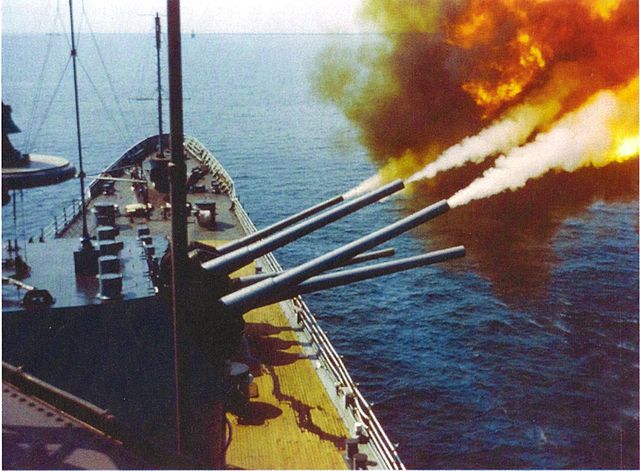
The guns of USS St Paul blazing out off the Vietnam coast in 1966
These guns, declined into many variants were the staple of USN heavy cruiser design, from the Pensacola class and Lexington class aircraft carriers to the Des Moines. The last version even made it on a cold war Forrest Sherman destroyer, the USS Hull, for testing purposes, called the 8 in/55 Mark 71 gun mount. The first 8-in caliber developed for modern USN cruisers was a 55 caliber, developed into the Mk 9, Mk 12, Mk 14, Mk 15 and Mk 16 variants.
They fired a 335 pounds (152 kg) A.P. shell or a 260 pounds (118 kg) H.E. shell. Muzzle velocity was 2,500 feet per second (760 m/s) and maximum range was 30,050 yards (27,480 m).
-The basic mark 9 gun unit weighted 30 tonnes, including a liner, tube, jacket, five hoops and its down-swing Welin breech block. Two 45 pounds (20 kg) silk bags of smokeless powder were loaded each time. It was similar to the mark 14 with the exception of an increased rifling twist.
-The Mark 12 eliminated hoops to reduce weight to 17 tons. The rate of fire rose to four rounds per minute.
-The Mark 15 was a Mark 12 using the smaller chamber of the Mark 14 gun
-The Mark 16 introduced a lined monobloc construction, vertical sliding breech blocks, and still a semi-fixed ammunition.
12″/50 caliber Mark 8 gun
The Alaska “large cruisers” main caliber. These artillery pieces were designed in 1939, the prototype being tested in 1942. Unlike the previous stanxard 16″/45 caliber of the North Carolina class, manufactured at the Naval Gun Factory, Washington D.C., the Mark 8 came from Midvale and Bethlehem Steel Corporation. The barrels were sent to the Naval Gun Factory for processing, and Watervliet Arsenal until after 65% of this process was done, and then sent back to the Naval Gun Factory for final completion before delivery.
The gun was first deployed in 1944 on USS Alaska. Each of the Alaska-class was given nine Mark 8 in three triple arrangements, so 18 in total for the whole class as the remainder ships were cancelled.
5″/51 caliber gun (127 mm)
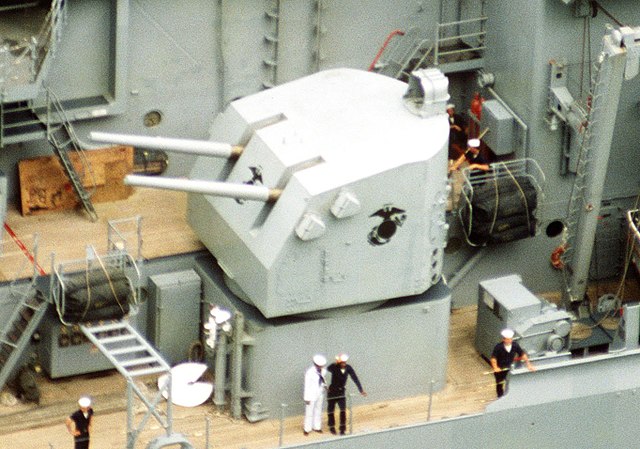
This ubiquitous secondary, dual purpose artillery was a wartime creation in its dual turret form. It was adopted by the Omaha class AA cruisers, the Cleveland, and Baltimore class cruisers, Alaska, Worcester and Des Moines. The previous generation was made of single mounts: The Pensacola had eight, the next Northampton had just four one them, the Portland eight, like the New Orleans class and USS Wichita as well as the Brooklyn class. Each time they were on the broadside, with the exception of some that were elevated to the level of the main deck.
3″/55 caliber gun (76 mm)
These were the old 3″/50 (7.62 cm) Marks 2, 3, 5, 6 and 8 types, and the more modern 3″/23.5 (7.62 cm) Marks 4 and 14 and 3″/23 (7.62 cm) Marks 7, 9, 11 and 13. They were ultimately replaced witn new twin moonts in 1945. The Des Moines had 24 × 3 inch/50 caliber guns in 12 twin mounts, and the Worcester experimented in a big way: There were five dual 3-in/50 Mk33 port, including 3-in/50s installed in early 1949, five dual 3-in/50 Mk33 starboard, and one dual 3-in/50 Mk33 on the bow plus two single 3-in/50 Mk34 on blisters fantail.
40 mm/56 Mark 1, Mark 2 and M1
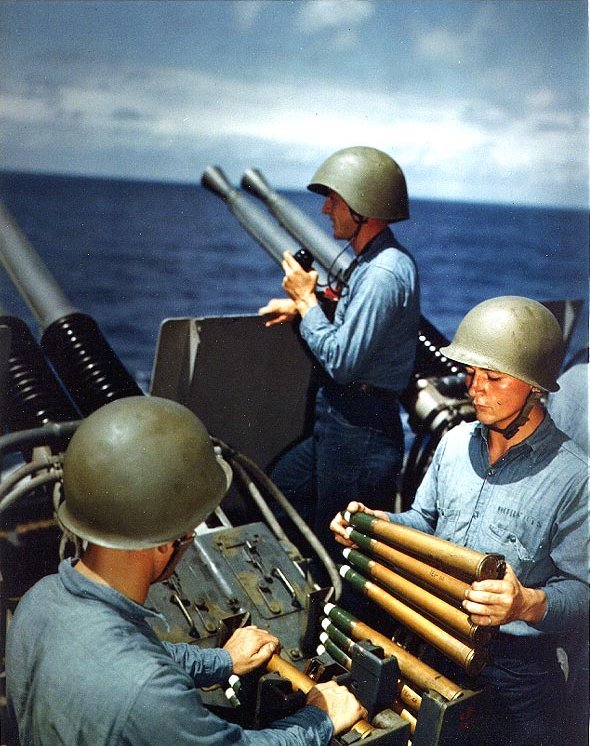
Widespread since the Omaha class, either in single, dual (rare) or quad mount. They became the stable of heavy short range AA artillery on all USN Cruisers. The interwar cruisers relied on single or dual mounted 12.7 mm or 0.5 in cal. Browning HMGs, of the liquid-cooled or later M2HB air-cooled type “Ma Deuce”. For example, Portland and Indianapolis were upgraded in 1944 with 24 Bofors 40 mm, in six quad mounts. They occupied some space, and therefor the superstructures of the Cleveland and Baltimore class were modelled AFTER the position of the 40 mm quad mounts were reserved, alternating with the dual 5-in turrets. These cruisers were literally crammed with these Bofors: The Cleveland class had 28 of them in seven mounts, and the Baltimore had 48 of these in all, either in twelve quad mounts or eleven twin mounts. In fact the sub-class Oregon City had comparatively far less of the smaller 20 mm Oerlikon guns: Twenty. The Des Moines had none, relying on more accurate, 3-in mounts and as well as the Worcester class.
1.1″/75 Mark 1/2 (28 mm)
The “Chicago Piano” was the standard quad AA machine gun mount in rare use on interwar USN Cruisers of the New Orleans class. They were never popular with the crews and were replaced by 40 mm mounts as soon as they were available.
20 mm/70 (0.79″) Marks 2, 3 & 4
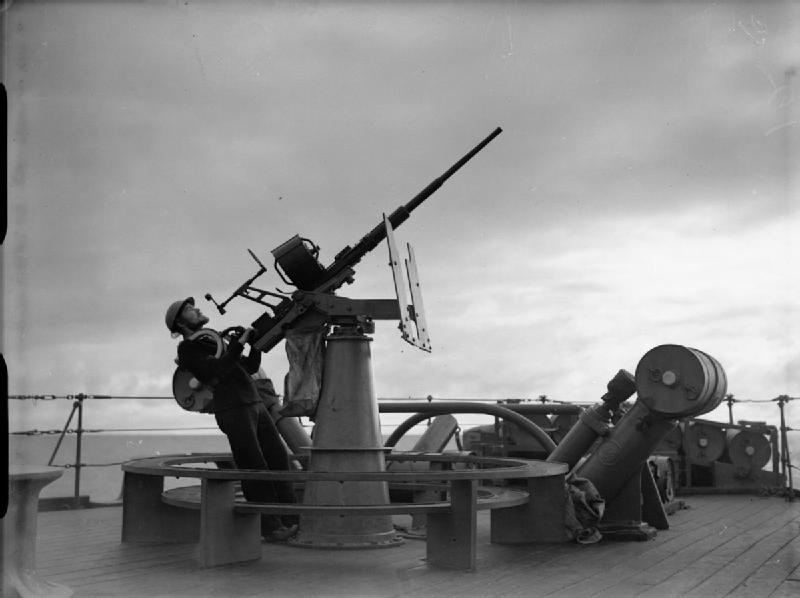
The Oerlikon AA guns has been designed by Switzerland and intended first to serve as a main French AA light gun. France fell, and in the meantime from 1935 the USN purchased two Oerlikon 20 mm Model 1934 guns for evaluation, but rejected it for having a low muzzle velocity and rate of fire. The IJN purchase of license rights and ironically saved Oerlikon from Bankrupcy, helping to refine its model, which came close to prefection when it was largely adopted by the allied during the War.
USN BuOrd investigated in 1940 to replacing the 0.50″ BMG and W.H.P. Blandy recommended the Oerlikon Mark I, approved on 9 November 1940. Manufacturing was quick and the first mount was was live tested on 8 June 1941, with 379 delivered by 7 December 1941. Until the capitulation of Japan, 124,735 Oerlikon were manufactured in the USA alone. They replaced the 0.50″ (1.27 cm) BMG but were soon reinforced by the 40 mm Bofors from 1943. Until September 1944, about 32% of all Japanese aircraft downed were credited to the Oerlikon gun, and up to 48.3% from June 1942, espeically with the adption of the Mark 14 Gunsight developed by Dr. Charles Draper of MIT, using two gyros to measure vertical and lateral rate of change, integrated in the generic Mark 51 AA director. It was replaced by the much faster Mark 20 Gun Sight after the war. However in 1944 the 20 mm was found unable to stop Japanese Kamikaze planes and disappeared together with the 40 mm in the mid-1950s, rendered obsolete by the advent of the Jet age.
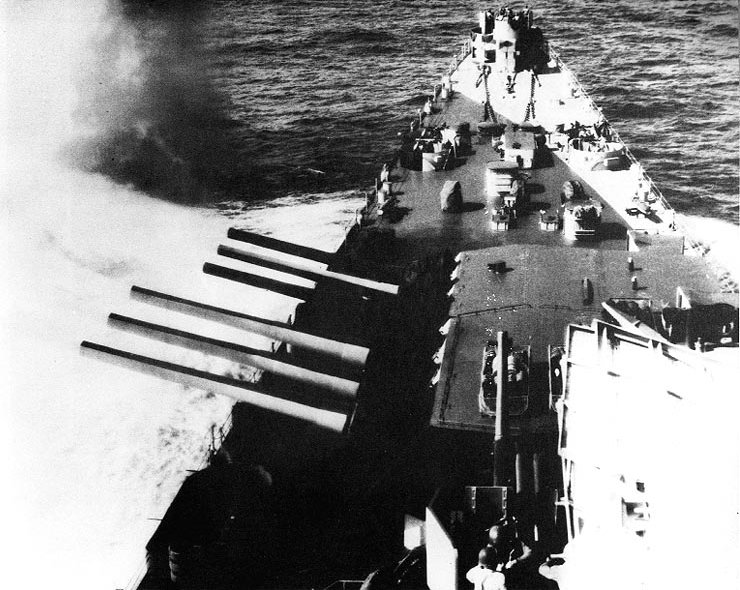
Cold War conventional USN Cruisers
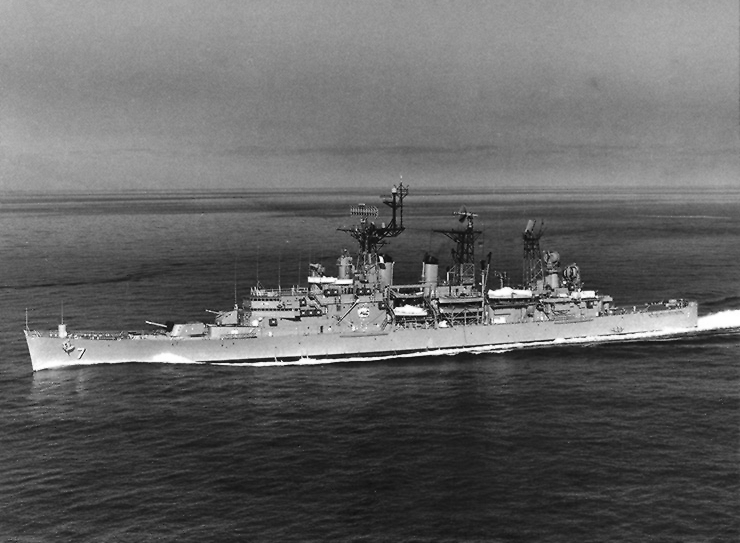
USS Springfield (CGL-7) as modernized in the late 1960s.
After V-Day the US Navy was found with a wealth of cruisers unlike any period in history: Most interwar generation cruisers survived the conflict and the Cleveland and Baltimore class (partly still in construction when the war ended) suffered no loss. The interwar generation cruisers were discarded in the 1940-50s, apart the early war Brooklyn class, partly resold to foreign countries, like Brazil, Chile and Argentina.
The Cleveland class were placed in reserve in 1946-49 reactivated and modernized in part, discarded in the 1960s or 1970s depending on the level of modernization. For the modernized cruisers CGL-3-8, Springfield, Topeka, Providence, Oklahoma City, Little Rock, and Galveston were rebuilt on the same model as hybrid conventional/missile cruisers. Like for the Boston class conversion (see after), their main conventional armament was kept forward, but a Terrier or Talos SAM systems were installed at the rear, with reloads and enough room for 46 or 120 missiles depending on the type. Their serviced ended on the seventies.
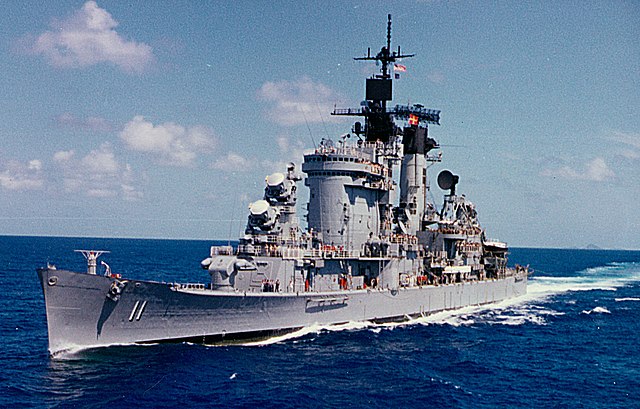
The Baltimore class heavy cruisers were also placed in reserve in the 1940s-50s, reactivated and modernized, some kept as pure conventional ships, and others as CG/CAG missile cruisers conversions. The USS Chicago, Albany and Columbus became CG conversions and Boston and Camberra CAG-1 and 2. The Boston class conversion consisted in modifying the superstructures and adding two RIM-2 Terrier missile launchers aft, with the main artillery kept intact forward. USS Boston and Canberra were converted at New York SB, both were recommissioned in November 1955 and June 1956.
The CH-10-12 conversion cruisers (USS Albany, Chicago and Columbus) were actually the most extreme conversions with two twin Talos SAM systems, forward and aft. The whole superstructure was rebuilt, and needless to say, the remaining artillery removed. This extreme reconversion was completed in 1961-62 and the ships were recommissioned in 1962-64. Their hulls were actually twenty years old at that stage.
These were fleet escorts to provide cover to the new USN supercarriers, like the nuclear USS Enteprise and previous Kitty Hawk and Forrestal conventional carriers classes. They were in service after probably the most outlandish USN Cruiser of that era, the USS Long Beach, which remained unique. Nothing of that scale was ever built afterwards, even when the USSR unveiled in 1979 its famous Kirov class “battlecruisers”.
The Albany class remained the largest missile cruiser ever built by the United States, displacing 18,777 tonnes fully loaded versus 16,600 for the Long Beach and even 8,000 tons above the Virginia class nuclear missile cruisers (1974), the weight of the latter and a Leahy class (1961) combined !
Des Moines class heavy cruisers (1946)
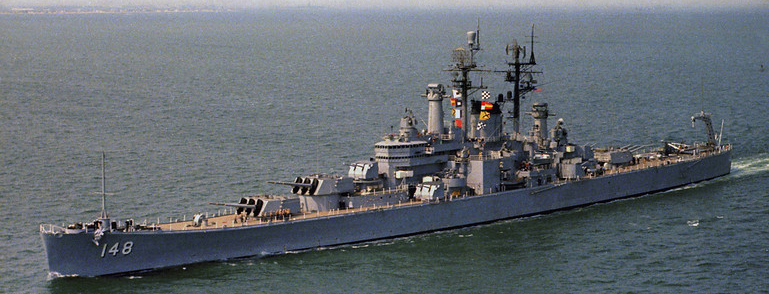
These three ships were the culmination of wartime US cruiser design. As soon as the Bureau of Ordnance perfected the automatic 6in/47 DP gun on which it had been working since 1937, it realised that the same principles could be applied to triple the rate of fire of the 8in gun; detailed weight estimates for twin and triple turrets became available in July, 1943 and a new cruiser to mount these weapons was almost immediately designed and ordered as the next class.
Such weapons would overcome the great defect of existing 8in guns – excessively slow fire – so slow that it was almost impossible to hit fast Japanese ships in night actions; at the same time they would greatly out-ranged the existing fast-firing 6in weapons.
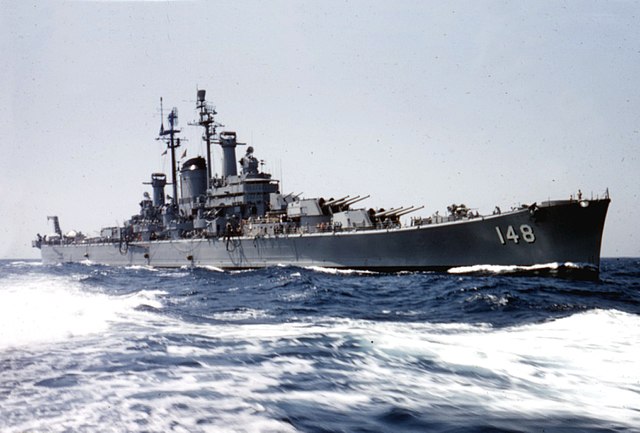
USS Newport News in 1957
At first a twin installation in Oregon City hulls was contemplated, on the theory that these ships might not even be delayed by the change; however, the General Board was already dissatisfied with existing heavy cruiser designs and felt that by demanding a completely new ship with triple turrets it would provide the postwar fleet with at least some satisfactory cruisers; otherwise the war might end with nothing but an inadequate six-gun ship under construction. New features not connected directly with the guns included a unit machinery arrangement similar to that in battleships and unique among US cruisers, and a separate ‘bomb deck’ to improve protection against bombing (not counted in computation of the immune zone against the 8in 260lb shell 15,700-28,000yds).
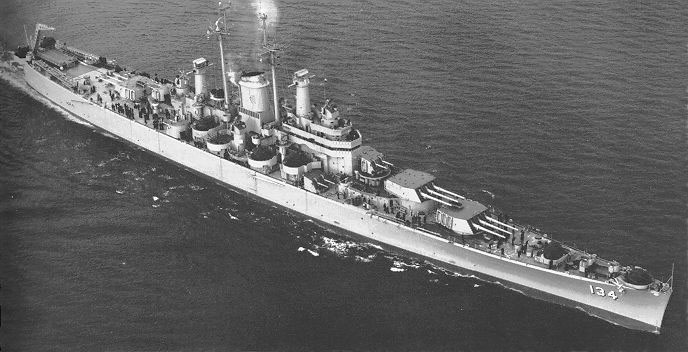
Des Moines overview 1948
As the decision to pass to a new class was made in mid-1943, the next cruisers to be ordered were order to ensure that some of the new twin DP 6in/47 mounts were sent to However, he was overruled and later CA140 and 141, which were little advanced, were cancelled. The three ships completed appear to have been successful, USS Newport News serving as a flagship and fire support ship until she was decommissioned in 1975. The new 8in rapid-fire gun appears to have worked well in service, the sole exception being a turret explosion in Newport News in 1972, which completely disabled No 2 mount. On trials, Des Moines achieved 125,630shp = 32.66kts at 20,532t.
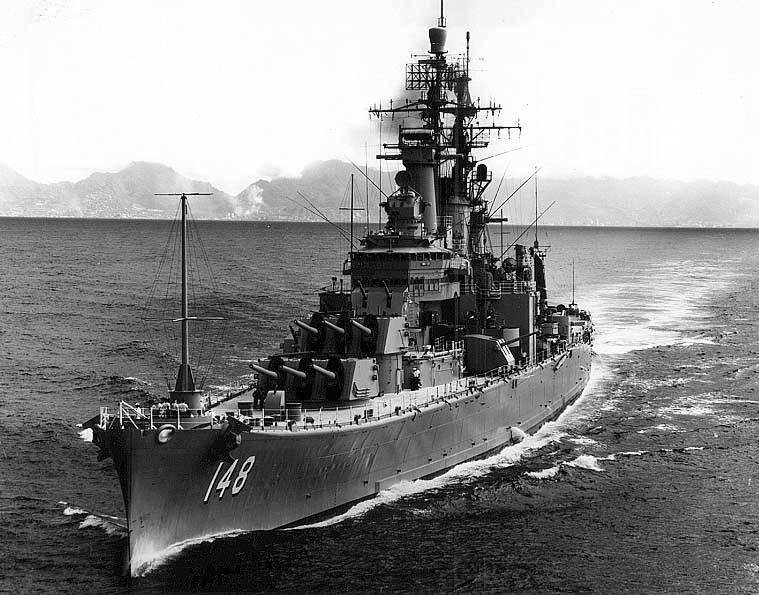
USS Newport News in 1966
In October, 1943 CA134 was added to the new class (Des Moines) to bring it to five ships; the question was also asked whether CL143, 148 and 149 were shifted to the new heavy cruiser design, but CL144, 145, 146 and 147 were retained as units of a new 6in DP cruiser class (Worcester) CA139-142 and CL143-149. Largely in a late-war (1945) programme, which would have added CA150-153, was never approved by the President, leaving, at the end of the war, eight prospective members of the Des Moines class. CA142, 143 and 149 were all suspended, although materials for them were held pending a decision as to their fate. Indeed, Admiral King argued strongly for their completion on the theory that a homogeneous group of eight such ships would be extremely valuable.
Specifications:
Displacement: 17,255 long tons standard, 20,933 LT full load
Dimensions: 218.39 x 23.32 x 6.7 m (716 ft 6 in x 76 ft 6 in x 22 ft)
Propulsion: 4 shafts GE turbines, 4 boilers 120,000 shp
Performances: 33 knots (61 km/h), Range 10,500 nmi at 15 knots
Armament: 3×3 8 inch/55, 6×2 5 inch/38 12 x 2 3 inch/50, 12 × 20 mm Oerlikon
Armour: Belt: 4-6 in (102-152 mm), Deck: 3.5 in (89 mm), Turrets: 2-8 in (51-203 mm), Barbettes: 6.3 in (160 mm), Conning tower: 6.5 in (165 mm)
Worcester class light cruisers (1947)

These very large ‘light cruisers’ were designed to mount the twin 6in/47 automatic DP gun originally proposed by the Bureau of Ordnance as early as 1937, and intended for the Cleveland as originally designed, in 1939. The project was revived in 1941, with General Board Characteristics calling for twelve 6in DP guns, no 5in secondary battery, protection limited to a very thick deck (up to 6 or 7in) and a speed of at least 33kts. Later the Board accepted conventional side protection comparable to that of the Clevelands, and by the time the design had been completed early in 1944 the Chief of the Bureau of Ships saw it for the now seriously overloaded Clevelands.

CL155 in 1953
He observed, too, that not even the new 5in/54 DP weapon an effective replacement would suffice against the guided missiles being introduced by the Germans and, presumably, the Japanese; the big 6in with a proximity fuze might well be not merely useful, but absolutely necessary. However, the success of the 6in/47 design inspired the Bureau of Ordnance to develop an automatic 8in/55, which was suitable for heavy cruisers not much larger than the Worcesters; the General Board at one point recommended that all seven new light cruisers contemplated (CL143-149) be re-ordered as large heavy cruisers. Ultimately production delays in the 8in gun and the need to send at least a few 6in DP weapons to sea modified this decision, so that four ships were ordered as 6in/47DP light cruisers: CL144-147, of which only two were ultimately completed.
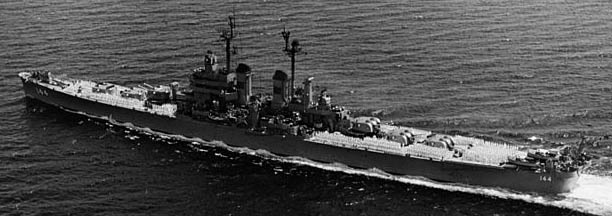
USS Worcester 31 May 1952
Protection was to ensure immunity against the 6in 105lb shell between 9300 and 28,000yds (90° target angle); against 1000lb SAP bombs dropped from any altitude; and against 12in 1000lb AP bombs dropped from below 7500ft. Bomb protection included a separate ‘bomb deck’ Roanoke late in her career above the principal armoured deck, as in battleships and some heavy cruisers a quartet of floatplanes aft with their catapults; these were never, however, installed, although the hangar and crane were. Similarly, the original design included 12 quadruple 40 mm guns and 20-20mm; both ships were, however, armed exclusively with the new 3in/50 gun as completed.
On trials Worcester made 122,096shp = 32.81kts at 16,940t.
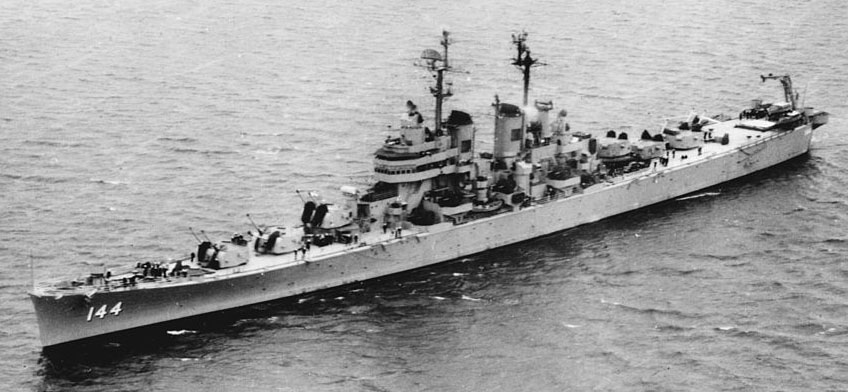
USS Worcester November 1949
Specifications
Displacement: 14,700 long-tons, 17,997 long-tons FL
Dimensions: 207 x 21.3 x 7.6m (680 x 70 x 25 ft)
Armament: 4 shaft Westinghouse, geared steam turbines 125,000 Horsepower
Performances: 33 knots
Armament: 6×2 6-in/47 Mk16 DP, 11×2 3-in/50 Mk33, 2 single 3-in/50 Mk34
Armour: belt: 3–5 in, deck: 3.5 in, turrets 2–6.5 in, barbettes: 5 in, CT 4.5 in
Read More /src
Conway’s all the world’s fighting ship 1906-21, 1922-47 and 1947-95
fr.naval-encyclopedia.com/2e-guerre-mondiale/us-navy-2egm.php#crois
//www.navsource.org/archives/04idx.htm
//www.navy.mil/navydata/nav_legacy.asp?id=136
//www.navy.mil/navydata/nav_legacy.asp?id=137
//www.wearethemighty.com/world-war-ii-cruisers
//www.globalsecurity.org/military/systems/ship/cl-144.htm
//www.microworks.net/pacific/ships/cruisers/baltimore.htm
//www.globalsecurity.org/military/systems/ship/ca-68.htm
//ca-69boston.org/
//www.militaryfactory.com/ships/detail.asp?ship_id=uss-chicago-ca29-cruiser-warship-united-states
//www.nationalgeographic.com/news/2017/08/uss-indianapolis-wreckage-found/
//usnhistory.navylive.dodlive.mil/2016/01/12/a-look-at-the-evolution-of-the-u-s-navy-cruiser/
//www.sandiegouniontribune.com/sdut-cruiser-san-diego-the-unbeatable-ship-of-wwii-2010mar18-story.html
//www.mathscinotes.com/2018/12/us-cruiser-production-during-ww2/
//uboat.net/allies/warships/types.html?type=Heavy+cruiser
//www.warhistoryonline.com/guest-bloggers/the-des-moines-class-cruiser-the-greatest-heavy-cruiser.html
Books: US Heavy Cruisers in the World War II part 2: Technology and weapons of world wars – Michael T. Benson
//www.nationalww2museum.org/war/articles/second-naval-battle-guadalcanal
Nomenclature of USN Cruisers
Omaha class scout cruisers (1920)
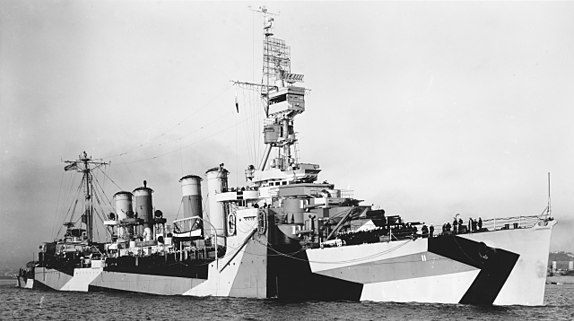
The Omaha were the first American cruisers after a very long eclipse dating back to 1907 (the Chester). They were originally designed in 1919, originally to take the squadrons of large-scale destroyers (Wickes and Clemson) from the end of the Great War. Like them, they had this hull flush-deck and were recognisable “oven pipers”. Their artillery was original, with an arrangement of two double turrets and pieces in barbettes, an unlikely mix that illustrated their transitional nature. They were launched in 1920-23 and completed in 1922-24, bearing the names of southern American cities (Omaha, Milwaukee, Cincinnati, Raleigh, Detroit, Richmond, Concord, Trenton, Marblehead, and Memphis).
Built lightly, they relied on speed and were part of this generation of what were called tin-clad cruisers, relying on speed as their only protection. lower on the water and in heavy weather in the North Atlantic, they loaded so much sea water that the sailors used to joke that their machines did not run on oil but with water from the sea. Atlantic … More poorly isolated, they were icy and wet in winter, furnaces in the summer sious the tropics. Their anti-submarine protection was very advanced and their active service was very active and long.
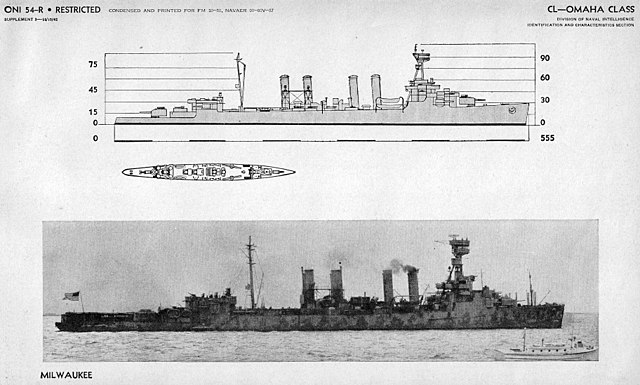
These ten ships received in 1936 a new main telemeter, their front mast was reinforced, and a more modern DCA was added to them in 1939, consisting of several double cal.50 (12.7 mm) machine gun carriages. In 1942 with the war, they were taken in hand for a deep modification of their DCA, modernized notably with new 127 mm pieces and a very reinforced light armament (see specifications). Those sent to the Pacific as those assigned to the Atlantic served as escorts.
At min-1942 a radar was added to them, and what they had left of torpedo tubes (four quadruple benches, originally 16 tubes) were removed to improve their stability, as well as the catapults for seaplanes that fitted some of them. . In 1944, the Milwaukee was transferred to the USSR as a lease-loan becoming the Murmansk, to provide escorts from that port. None of these were sunk during the war. They were all scrapped in 1946, except the Murmansk, returned in 1947.

The USS Milwaukee in June 1942, departing for Guadalcanal. The camouflage of the time was quite complex but well adapted to the landscape of South Pacific islands.
Characteristics (in 1942)
Displacement: 7050 t, 8950 T FL
Dimensions: 172 x 16.2 x 7.25 m
Propulsion: 2 propellers, 2 Westinghouse turbines, 2 BW boilers, 70,000 hp. and 32 knots max.
Armor: 90 mm belt, 25-50 mm blockhouse, bridges and CT.
Armament: 10 x 152mm guns (2×2, 6×1), 6 x 127mm guns, 2×4 x 40mm, 8 x 20mm, 8 Mitt. 12.7 mm, 2×4 TLT 533 mm.
Crew: 750
Pensacola class heavy cruisers (1928)
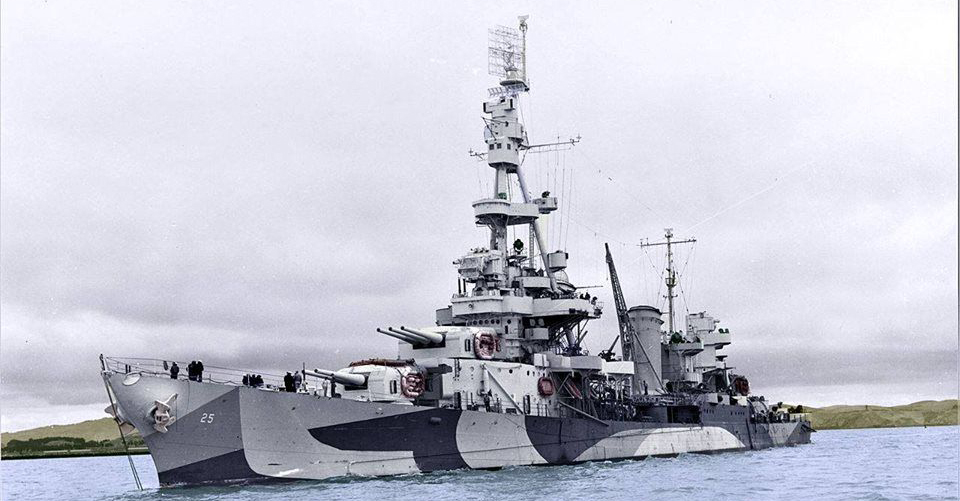
The USS Pensacola in March 1945, in support of Okinawa. Note the evolutions with the original design – see below.
When the treaty of Washington was ratified by the great naval powers in 1922, the nomenclature of the types was modified and somehow concepts, consecrated. Among these changes, the most notable was the appearance of a new class in its own right, the “Washington Cruiser” which in fact was the typical form of the heavy cruiser, a new category with almost intangible, 10,000 tons – Eight 8-inches (203 mm). If the British, French and Italians chose the double turret configuration, the Americans from the beginning adopted a triple turret configuratiosn already well initiated for their dreadnought. It appeared natural to adapt it for their cruisers, while maintaining a configuration in four axial turrets.
The Admiralty had thus in this design choose a compromise with the most powerful artillery possible (ten pieces) crammed on a strictly limited tonnage. Like other navies, welding construction technique was adopted to save tons of steels rivets. But these choices were paid later in practice and throughout their careers. For reasons still unclear the triple turrets were placed in superfiring positions rather than the contrary.
In addition, this was compounded by the adoption of tripod military masts, both tall and heavy, to suppoer the fire control posts, and a tall bridge blockhouse. With a limited beam and a lightly built hull, this caused a dangerous overweight and the Pensacola cruisers were quickly seen as excessive “rollers”. So excessive in fact that from trials, captain voluntarily limited their evolutions and turns in particulars. Each time these manoeuvers needed to be made a a lower speed than the operation required. Morover their pitch was high due to flush deck hull too short, narrow and overloaded in the front, making these ships ploughing excessively and disturbingly, in heavy weather.
The Pensacola class was quasi-experimental. USS Pensacola twin, USS Salt Lake City, was launched in 1930 and completed in 1931. Both ships received already counterkeels in 1939 to improve their stability, but in 1942 their superstructures were massively lightened, and the massive tripod masts were removed. This did dot resolved completely their problem, but having their turrets swapped for example or the superrfiring ones removed seemed not to have been an option. They received a radar, new fire control systems, and a powerful AAA. This settled some of their deficiencies and they participated in the major pacific operations before being removed from active service in 1947.
Their example helped to define the next class, the Northampton. It must be said that the last class of “heavy” cruisers in USN service dated back to the Saint Louis of 1908. This partly explains many theoretical deficiencies leading to the blueprints for these ships, a true novelty in the US Navy.
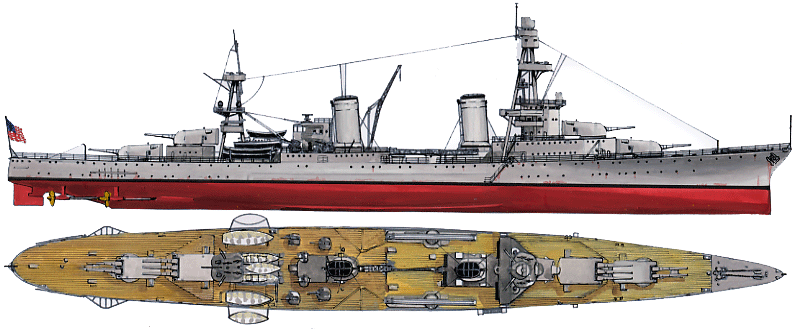
The USS Salt Lake City in 1939. These over-armed sailors were so severely weighted in the highs that they were rebuilt in 1942.

The USS Pensacola in March 1945, in support of Okinawa. Note the evolutions with the original design
Characteristics (in 1939)
Displacement: 9100 tons, 11,500 tons FL
Dimensions: 178.5 x 19.9 x 5.9 m
Propulsion: 2 shaft, 4 Parsons turbines, 4 WF boilers, 107,000 hp. 32.5 knots
Armor: Turrets 165, belt 63, blockhouse and casemate 105-50 mm, bridge 51 mm.
Armament: 10 x 152mm guns (2×2, 2×3), 4 x 127mm guns, 8 Mitt. 12.7 mm, 2×3 TLT 533 mm, 4 seaplanes.
Crew size: 631
Northampton class heavy cruisers (1930)
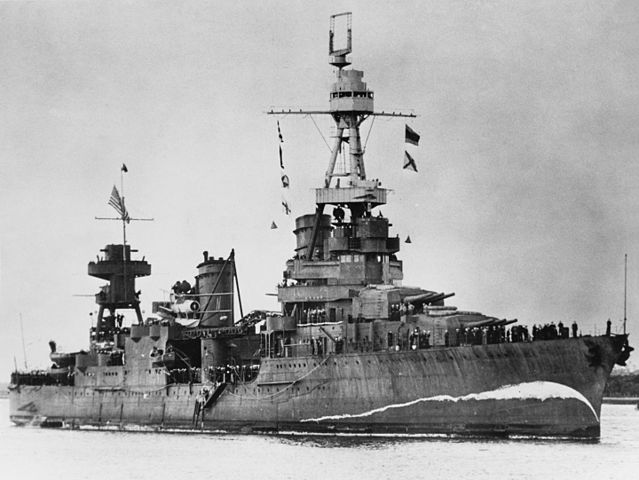
Succeeding to the Pensacola, the Northampton class improved many points. The very poor behavior at sea was compensated by a raised bow and forecastle instead of a flush deck, three triple turrets instead of four mixed, an increased width, and lowered superstructures. However, speed remaining a priority, their armor was sacrificed, only capable against destroyers shells, and their subdivision, especially for parabolic shells, was insufficient. These were the USN “tin-clad cruisers”. The class included six ship built at Newport News and New York’s arsenal respectively: USS Augusta, Chicago and Houston, Northampton, Chester and Louisville.
The war quickly imposed the adoption of an AAA more convincing than single 5-in (127 mm) mounts and 0.5 in (12.7 mm) HMGs with nothing in between. One of their side TT bank was sacrificed for four additional 5-in and four twin 0.5 in mounts. Their aft superstructure was lightened, and from 1943, a new drastic overhaul of the superstructure occured, which were lowered and lightened, but better armored. Subsequently survivors of Guadalcanal in late 1943 saw the replacement of their 0.5 in by quadruple 40 mm and single 20 mm (in 1944, typically twenty 40 mm and thirteen to twenty 20 mm Oerlikon). Houston, Northampton and Chicago were sunk around Guadalcanal, USS Chester was badly damaged in never repaired, while the other two survived and left the active lists in 1949.

USS Houston in march 1942, with an early navy blue camouflage measure, in the Solomons.
Characteristics (in 1941)
Displacement: 9,006 t, 11,420 T FL
Dimensions: 182.96 x 20.14 x 5.9 m
Propulsion: 2 shafts, 4 Parsons turbines, 4 WT boilers, 107,000 hp. and 32.5 knots max.
Armor: Turrets 50-60, belt 76, blockhouse and casemate 95-20 mm, bridge 25 mm.
Armament: 9 x 152mm (3×3) guns, 8 x 127mm guns, 8 Mitt. 12.7 mm, 2×3 TLT 533 mm, 4 seaplanes.
Crew: 670 (1941) 850 (1944).
Portland class heavy cruisers (1931)
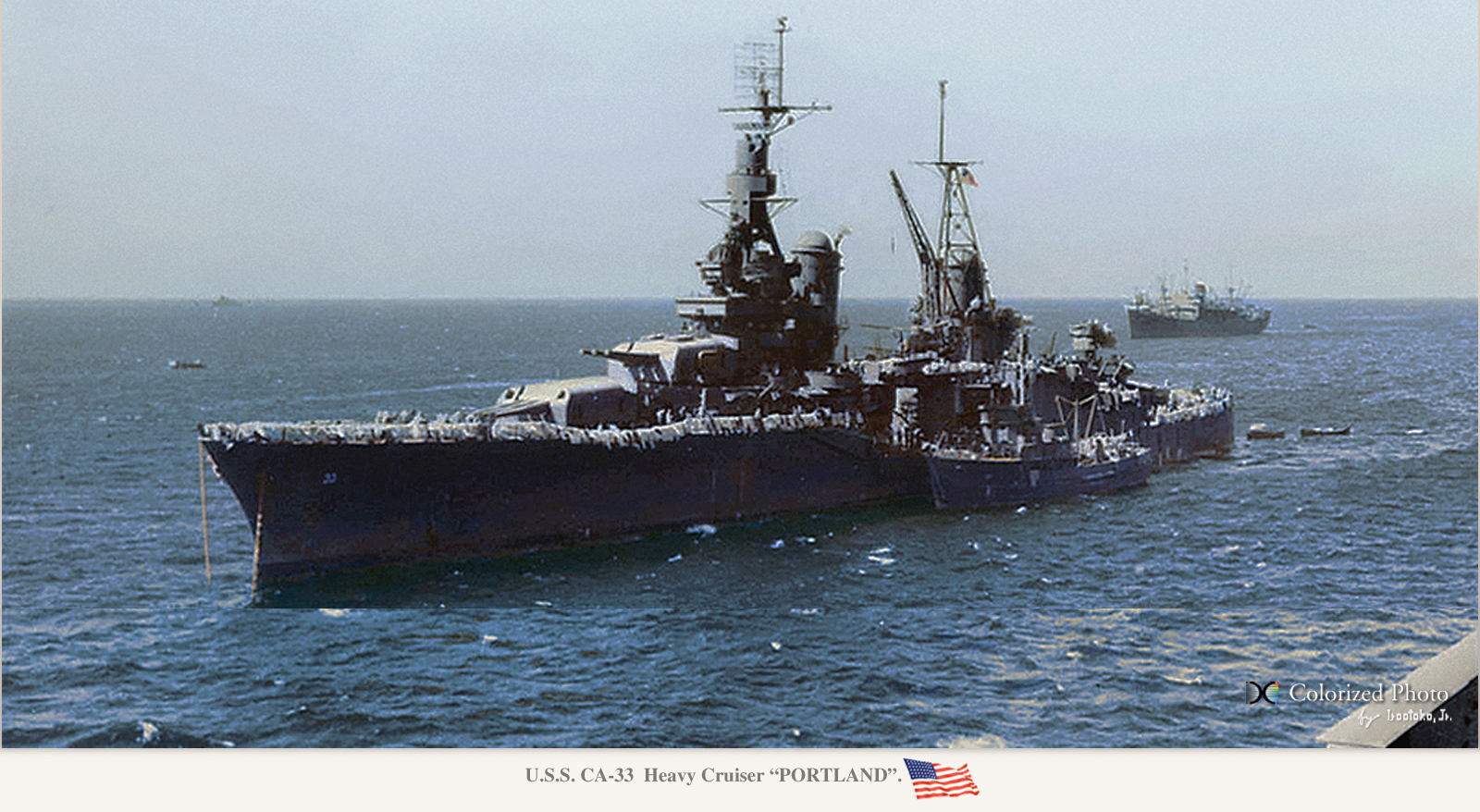
USS Portland, colorized by Hirootoko JR.
Designed after the Northampton, the two new heavy cruisers, Portland and Indianapolis, were contemporary of the New Orleans which on their side improved on many points and mainly that of protection. Spacious, larger and heavier than the Northamptons, they were nonetheless also the last of the “tin clad” cruisers. Their tonnage was already 10,260 tonnes standard, so there was no additional armor margin possible within the limitations.
Some areas were protected against 6-in shells at certain angles, but 8-in shells could pass through them without problem. Torpedo tubes were removed and AAA increased in compensation. Among their originality, the front mast was much lower, as well as the rear one, lighter and cleared of projectors, relegated to footbridges behind the funnel, for a better stability. Their large accommodations make them ideal to serve as command ships.
Until May 1943, these two ships were taken over for a redesign, among other things to clear the bow for more AAA, which more than doubled. The superstructure were rebuilt, lightened and lowered, with an open deck, and the tripod mast removed in favor of a mast-lattice in front of the rear funnel. AAA went up to four quadruple carriages, and four twin 40 mm and 12 singles 20 mm Oelikon. These two ships were heavily engaged in the Pacific. These modifications were the prototypes of the subsequent Northampton class reconstruction.
USS Portland (CA33), was very active and deployed during most major naval operations of the Pacific, and several times damaged. She survived the war and was broken up in December 1959. In 1945, USS Indianapolis was doubly (in)famous. First for delivering the A Bomb (“Little Boy”) at Tinian, where a B29 bomber named Enola Gay, carried it to sow apocalypse in Hiroshima.
As a kind of stroke of fate (or celestial vengeance for the Japanese), the cruiser on her return on July 29 was torpedoed by a Japanese submarine. The last USN major loss in this war. She sank quickly, taking with her a large part of the crew, the others having to survive through the burning oil, and later isolation and fatigue, shark attacks for several days before being collected. The last ship of the allies to be sunk during the Second World War was the centrepiece of a drama that inspired a movie, USS Indianapolis: Men of Courage in 2016.

USS Indianapolis en 1945, at the time she delivered the atomic bomb, sunk soon after on her way back.
Specifications
Displacement: 10,258 t. standard -12,755 t. Full Load
Dimensions: 185.9 m long, 20.12 m wide, 6.40 m draft
Machines: 4 propellers, 4 Parsons turbines, 8 Yarrow boilers, 107,000 hp.
Maximum speed: 32.5 knots
Shield: Belt 57, turrets 65, bridges 160-50
Weaponry: 9 guns of 203 (3 × 3), 8 of 127, 8 ML 12.7 mm AA, 4 aircraft
Crew: 917
New Orleans class heavy cruisers (1933)
No doubt the “tin class cruisers” of the previous Washington designs, imposed by the tonnage limit forced the office of construction and repair within the Admiralty to review its copy by gaining weight where it was necessary for a better distribution and improve protection. The “tin clad cruisers” period was drawing to an end in Europe, Italy unveiling the Zara class and France the Algérie. Also it was no longer claimed that the range and firepower of 8-in artillery made any protection superfluous. From 1929 a plan called for 20 new cruisers, and very quickly the admiralty was interested in well-balanced European designs.
The bureau studies demonstrated that by restricting dimensions and weight distributon it was possible to maintain good protection, sufficient horsepower and reasonable speed while remaining within the required tonnage limit. But that implied also a slower speed. This design work led to the definition of an internal compartmentation with an internal armor extending only around the superstructures and main turrets, called the “immune zone” using the all or nothing scheme already tried on battleships, and inspired from ancient protected cruisers.
In addition to this redistribution, lighter and still powerful machines were used, while torpedo tubes were eliminated from the design. The hull was also shortened and lowered. This allowed a 5.5 in (130 mm) armour thickness overall on the central cell and belt. Machine rooms were protected by an extra 3.5-in (90 mm) and the decks by 2.5-in (64 mm).
The US Navy used this class, first called Astoria after the lead ship (which sank later), to test variations on a design that remained broadly similar. There are three series, the New Orleans, Astoria and Minneapolis, for the first, the Tuscaloosa and San Francisco for the second and the Quincy and Vincennes for the last. Blueprints were revised between each series and a difference of 600 tons existed between the first and last. These were test benches and the direct ancestors of all upcoming American cruisers. The turrets received 0.9-3 in (25-70 mm) and the barbettes 7-in (170 mm). The blockhouse was protected by 5.5-in also. But speed remained very comfortable at 33 knots. On their time, the New Orleans were probably among the world’s most successful heavy cruisers, although protection (as shown by events) was still not optimal.
On the other hand, anti-aircraft artillery was entrusted to eight 5-in (127 mm), way too slow to deal with modern strafing aviation, alongside eight 2.5 in way too short in range. This was largely compensated during the war, with many quadruple Bofors 40 mm and fifty or so single oerlikon guns. They also received radar and new targeting and firing controls, while their superstructure was lightened again, reworked but “bunkerized”. USS Astoria, Quincy and Vincennes were famously destroyed during the battle of Savo in August 1942, and the others participated in many hard engagements but survived the war.

USS San Francisco in March 1945, the horizontal livery in effect since the end of 1944, of light gray/medium gray/dark blue
Characteristics (in 1941):
Displacement: 9,950 t, 12,400 T FL
Dimensions: 179,27 x 18,82 x 5,9 m
Propulsion: 2 shafts, 4 Westinghouse turbines, 8 B&C boilers, 107,000 hp. 32.7 knots max.
Armor: Turrets 30-70, belt 120, CT 130 and casemate 80 mm, decks 60 mm.
Armament: 9 x 203 mm (3×3), 8 x 127 mm, 8 x 12.7 mm, 4 seaplanes
Brooklyn class heavy cruisers (1936)

The signing of the Treaty of London, then a report from the US Naval Attaché to Japan which noted that the IJN Admiralty with the Mogami was working on a new type of cruiser combining low displacement and great firepower, presided over the design of Brooklyn class ships. They were by tonnage heavy cruisers, with a displacement of nearly 10,000 tons, but “light cruisers” as armed with fifteen 6-in (152 mm) guns of a new semi-automatic type, twice as fast as 8-in guns. Distribution was also in five triple turrets to achieve the greatest possible firepower.
On the other hand, this passage to fifteen guns took place at the cost of a drastic reduction of armor compared to New Orleans. The hull was nevertheless of a new model, more massive and roomy, especially with a near square stern, incorporating a hangar for 4 seaplanes. Compartimentation was stronger, compensating the lack of armor by dissipating the rounds energy. As a result, the superstructures were also reduced to allow the installation of the five axial turrets.
Just like the previous class, seven of the Brooklyn class were built between 1935 and 1938. USS Brooklyn, Philadelphia, Savanah, Nashville, Phoenix, Boise, Honolulu, St Louis, and Helena. The latter two had their machines rearranged, and new 5-in/38 in the brand new twin turret instead of the previous single unprotected mounts, while their superstructures were revised behind the aft funnel.
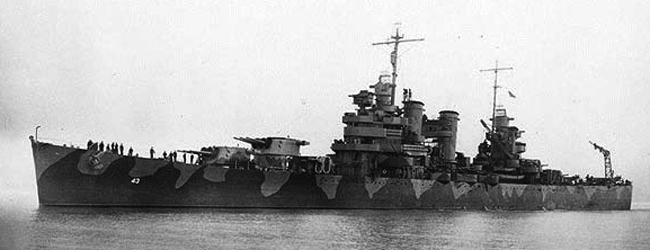
USS Brooklyn 1942
In 1942, they all received a new open gangway, with lightened superstructure, the CT removed, and portholes largely welded shuts. They were later supplemented by a massive AAA, reaching its maximum at the end of 1944 with four quadruple and six twin 40 mm carriages, and twenty 20 mm AA in twin or 18-20 in single mounts.
They were all well engaged in combat with mixed success, in Europe for the most part, especially in the Mediterranean. In 1943, in July, the USS Helena was sunk by German guided flying bombs. It was proved that her AA did not have sufficient scope. This was the only loss of this class, and only USN cruiser sunk by missiles. After the war, those who were not broken up in 1960 had been sold to the three “naval powers” of South America, Brazil (StLouis), Argentina (Phoenix, Boise), and Chile (Brooklyn), Nashville). They were still in service in the 1980s, with little change.

USS Philadelphia
Characteristics (in 1941):
Displacement: 9,767 t. standard -12 207 t. Full Load
Dimensions: 185.42 m long, 18.82 m wide, 6.93 m draft
Machines: 4 propellers, 4 Parsons turbines, 8 B & W boilers, 100,000 hp.
Maximum speed: 32.5 knots
Shield: Belt 127, turrets 155, bridges 25, blockhouse 127
Armament: 15 guns of 152 (5 × 3), 8 of 127 mm, 30 of 40 mm AA (4 × 4, 6 × 2), 20 of 20 mm, 8 mitt. 12.7 mm AA, 4 aircraft
Crew: 868
USS Wichita (1937)
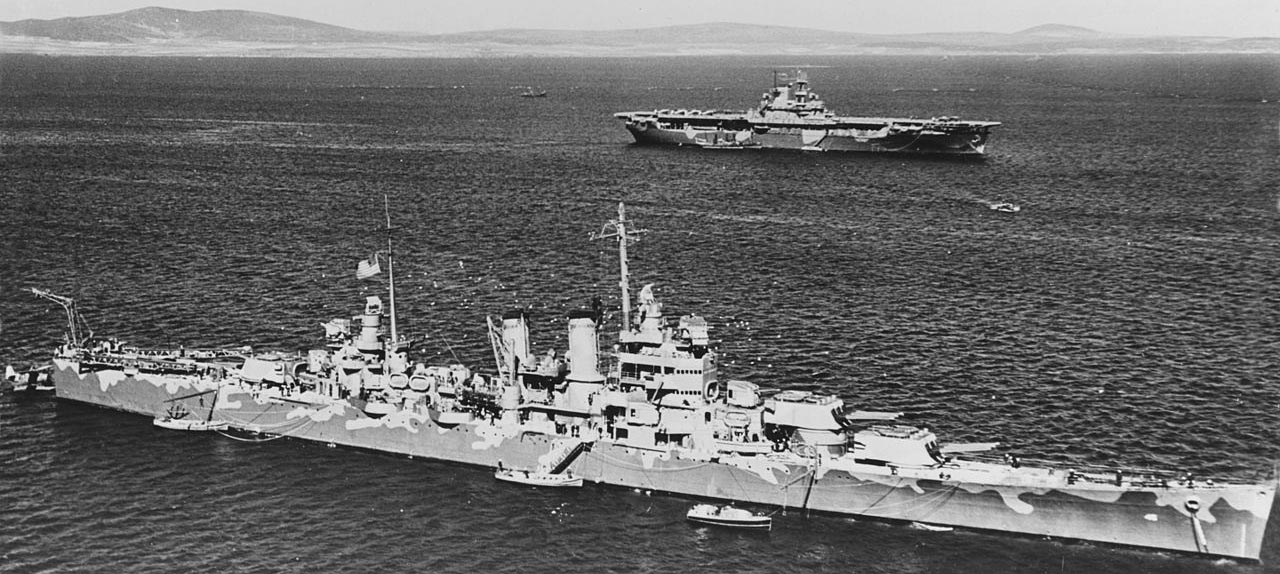
USS Wichita and USS Wasp at Scapa Flow by April 1942
This heavy cruiser, derived from the Brooklyn class, shared the hull with its square stern, and was authorized under the Treaty of London, for the fiscal year 1935. A Brooklyn derivative was proposed, with better equipment and space available for its onboard aviation, and superstructures revised to release additional firing arc, and a more modern secondary armament in single DP turrets, a higher freeboard, better stability, and new turrets, more spaced, plus a much better protection, while exceeding the 10,000 tonnes limit.
The Wichita entered service in 1939, and she was an important milestone in the design of USN heavy cruisers of the 1940s: The Baltimores class studied in 1940 were closely inspired by the Wichita.
However, as the boundaries of the treaty flew away at the beginning of the conflict, engineers became free to add additional 5-in turrets and largely reinforce the AAA, now including 40 and 20 mm guns (8 of 40 mm and 15 of 20 mm). Wichita was little modified until 1944, gaining a radar while her bridge was lightened and rebuilt in the same standard as other cruisers.
USS Wichita spent most of her career in the Atlantic, escorting convoys with the Royal Navy. In 1948, the office of ships and repair conducted a study for her conversion into a missile cruiser. In the end Baltimore class units were preferred and she joined the demolition yard in 1959.

Author’s illustration of USS Wichita in 1945
Characteristics (in 1941):
Displacement: 10,589 t. standard -13 015 t. Full Load
Dimensions: 185,42 m long, 18,82 m wide, 7,24 m of draft
Machines: 4 propellers, 4 Parsons turbines, 8 Babcock and Wilcox boilers, 100,000 hp.
Maximum speed: 33 knots
Shield: Belt 152, turrets 203, bridges 57mm
Weaponry: 9 guns of 203 mm (3 × 3), 8 of 127 mm, 8 ML 12.7 mm AA, 4 aircraft
Crew: 929
Atlanta class AA cruisers (1941)
At the end of the 1930s, the concept of “super destroyer” became fashionable. The Admiralty also sought to define a new type of light cruiser to replace the old Omaha class from the 1920s. The concept had resulted in a lightweight generic ship exclusively armed with the new standard 5-in (127 mm) dual purpose, twin turrets. Semi-automated, these had excellent anti-aircraft capabilities as well as anti-ships and became widespread on the USN.
To survive in front of heavier ships, the Atlanta class had to rely on their speed. The displacement being limited to 6,000 tons was the result of the second treaty of London in 1936 for extra tonnage cruisers. Initially only four ships were ordered, followed by four others much later, and war broken out in the meantime, and so they come as completely redefined in the 1940s with a new rearmament program in a serie of 11 vessels, later curtailed.
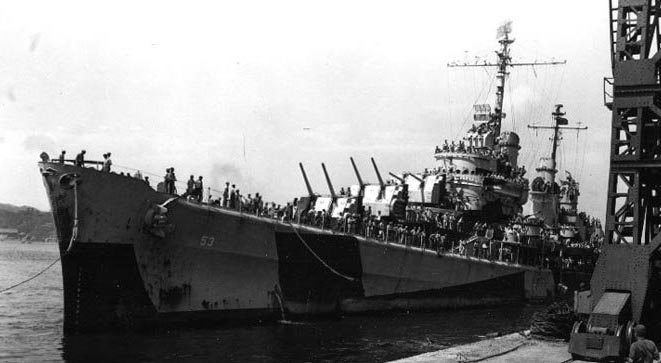
USS_San_Diego_Yokosuka_30_August_1945
From USS Oakland, they differed by an open deck and additional light AAA instead of their side turrets. Due to the increase of AAA during the war many modifications were imposed, including the addition of ballasts, removal of TTs, new lightened superstructures, more concentrated, seen on the last launched in 1944-46, USS Juneau (2), Spokane and Fresno. They did not participated in the conflict unlike the other eight completed in 1942-45, USS Atlanta, Juneau, San Diego, San Juan, Oakland, Reno, Flint, and Tucson. They were all named after major Texan cities.
The first four, accepted in emergency in January-February 1942 were immediately thrown into the hell of the Salomon Islands: Two did not return from it, USS Atlanta and Juneau, sank together on November 13 near Guadalcanal. They were the only losses of the war.
The others served as AA escorts for the large Task Forces of the Pacific. Their characteristics made them relatively unhelpful vessels (like the British Dido class), as their engines proved to be disappointing, speed and manoeuvrability very inadequate. As squadron destroyer leaders they proved a little more useful. They remained in service between 20 and 25 years, disarmed 1962-66, even 1973 for USS Spokane.

USS Juneau in 1942, showing her particular camouflage
Characteristics (in 1941):
Displacement: 6,718 t. standard -8,340 t. Full Load
Dimensions: 165 m long, 16.21 m wide, 6.25 m draft
Machinery: 2 shaft Westinghouses turbines, 4 B & W boilers, 75,000 hp.
Top speed: 32.5 knots
Shielding: Max: 90 mm
Armament: 16 guns of 127 (8 × 2), 16 of 40 mm AA (4 × 4), 8 of 20 mm, 8 TLT 533 mm (2 × 4), 80 grenades ASM
Crew: 623
Cleveland class light cruisers (1942)


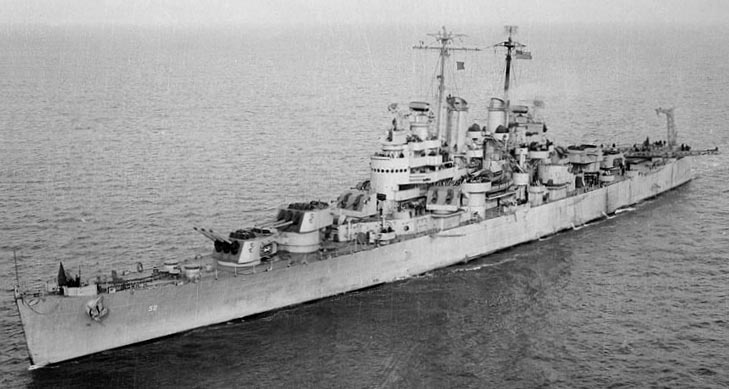
USS Denver Underway, circa December 1942. Photograph from the Bureau of Ships Collection in the U.S. National Archives.
The Cleveland-class cruisers formed series of ships which became the most prolific ever for cruisers. With 29 completed out of 52 keels laid down, 13 cancellations and 10 converted into fast aircraft carriers (USS Independence class), this was the new standard of USN “light” cruisers. They were “light” only in contrast with the Baltimore, as their wartime tonnage reached 12,000 tonnes empty and 14,000 fully load, above Washington limits.
Among these units, two will be completed on a different design, the USS Fargo and USS Huntington. This revised 1942 design was to give them a better arc of fire for their AAA by adopting a more compact superstructure, entirely reviewed and simplified, plus a single funnel.
The attempt to respect the treaty fell out at the outbreak of the war, and to save time, the Cleveland were chosen for mass production. Their limited size and the hunting of excess weight made their protection insufficient. The original project, defined in 1939, was to include 5 twin turrets of the new semi-automated 6-in, but development time meant that we relied on the proven triple model of the Brooklyn class instead, while the model was ready for the next Worcester.
The Cleveland were more Brooklyn than Wichita in concept, which rather inspired the Baltimore. As expected, the Cleveland had a little more machine space and integral power supply that made portholes obsolete as source of waterways. The AAA artillery differed between ships, 28 x 40 mm and 21 x 20 mm for both Fargo subclasses in 1945.
The Cleveland class ships were laid down between 1 July 1940 and 20 February 1944 and launched between 1 November 1941 and 22 March 1945. Some were completed too late to participate in the war: the USS Manchester, Galveston, Fargo and Huntington, who did not have the opportunity to assert the relevance of their new design in operations. But they were deployed both in Korea and Vietnam.
After the conflict, this force was of course largely involved in many support operations, and some were later converted into hybrid missile launchers. Some were dropped from the lists after 1960, and others survived until 1970-78. The USS Little Rock is one of those. She has been preserved and is currently a museum ship, only surviving example of the class, but not in her original state unfortunately.

USS Birmingham in 1944, soon after the battle of Leyte where she was badly damaged by the explosion of the carrier St Lo
Characteristics
Displacement: 11,744 t. standard -14 130 t. Full Load
Dimensions: 185.9 m long, 20.22 m wide, 7.47 m draft
Machinery: 4 propellers, 4 GE turbines, 4 Babcock & Wilcox boilers, 100,000 hp.
Top speed: 32.5 knots
Armor: Belt 127, turrets 165, bridges 51, inner casemate 127-152 mm
Armament: 12 guns of 152 (5 × 3), 12 of 127 (6 × 2), 28 guns of 40 (4 × 4, 2 × 2), 10 of 20 mm AA, 4 aircraft
Crew: 273
Baltimore class heavy cruisers (1942)
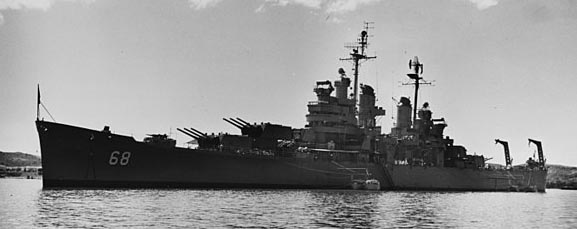
The Baltimore class cruisers were not to be the last or the largest conventional cruisers built, followed after the war by the Worcester and the Des Moines, but they are certainly among the best. The Clevelands had been criticized for their lack of space. The Baltimores were to resume studies with the USS Wichita and push their advantage in a more massive hull while paying particular attention to protection.
Peacetime had long been forgotten, since at full load a Baltimore reached 17,000 tons, which was quite considerable, and placed them at the head of allied cruisers in size. The Baltimore class was to have 24 units, but 6 were cancelled on August 12, 1945. The remaining 18 were admitted for service, but after the conflict for six of them. Those who had time to participate were 12: The USS Baltimore, Boston, Camberra, Quincy, Pittsburgh, St. Paul, Columbus, Chicago, Bremerton, Fall River, Los Angeles and Macon. They were launched in 1942-44 and completed in 1943-45.
Their main features, apart from their huge hull, were their artillery in three 8-in triple turrets, as for the Wichita, a secondary AA artillery made of standard 5-in twin turrets, and a much higher light weaponry . The experience of the conflict had made it possible to mount such a concentration of guns around the central redoubt that each ship could set up a veritable “wall of steel” impassable to the torpedo bombers, and later to the Kamikazes.
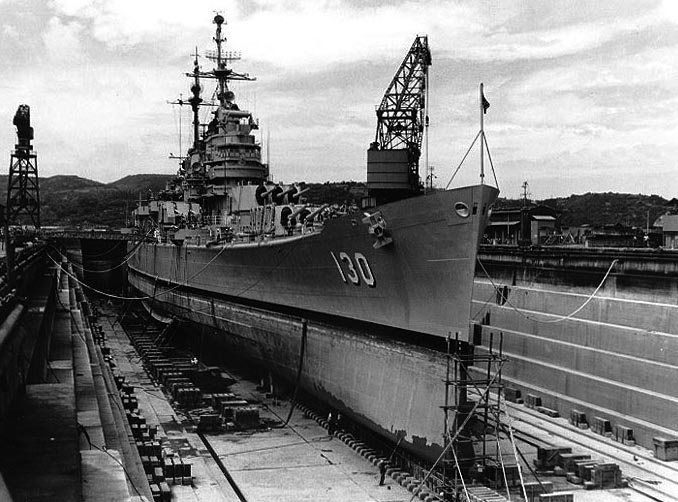
A simple comparison makes it possible to get an idea of it: The USS Wichita, when it entered service in February 1939, had 8 pieces of 127 mm and 8 machine guns of 12.7 mm. With the Baltimore, we went to 12 of 127 mm, 48 of 40 mm, 24 of 20 mm in 1942, and much more in 1945. Another peculiarity of these ships was the adoption of a better distributed shielding, and new shells for their 203 mm pieces. These much heavier ones could in parabolic trajectory cross the thickest armor of Japanese heavy cruisers in service.
During the war, these ships registered no losses, despite their presence in very hard commitments. But in 1944, the situation in Japan was such that the only threats to be feared were Kamikazes and pocket submersibles of the coastal defense or suicide boats. As for the Cleveland, attempts were made to further improve their arc of fire by reducing the superstructures, while reviewing the distribution of the armor.

This culminated in the sub-class Oregon City, launched as her two sister-ships Albany and Rochester in 1945 and completed in 1946. Soon enough for the Korean War. These ships had a brilliant career after the war, forming the backbone of the US conventional fleet until 1970. Many served as fire support and command ships in Vietnam, and five of them were completely rebuilt in missile cruisers including two, the USS Chicago and the USS Albany was still in service in 1980. They have been put in reserve since.
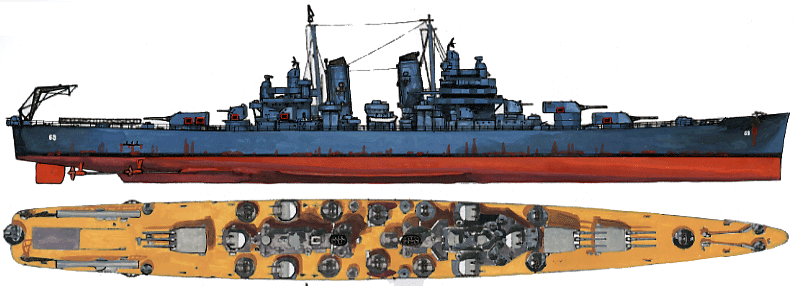
USS Boston in 1945

USS Pittsburg 1945

USS Quincy in 1944
Characteristics
Displacement: 14,472 t. standard -17 030 t. Full Load
Dimensions: 205.26 m long, 21.60 m wide, 7.32 m draft
Machinery: 4 shaft GE turbines, 4 Babcock & Wilcox boilers, 120,000 hp.
Top speed: 33 knots
Armor: Belt 152, turrets 203, bridges 76, inner casemate 127-155 mm
Armament: 9 guns of 203 (3 × 3), 12 of 127 (6 × 2), 48 guns of 40 (11 × 4, 2 × 2), 24 of 20 mm AA, 4 planes.
Crew: 723
Alaska class large cruisers (1944)
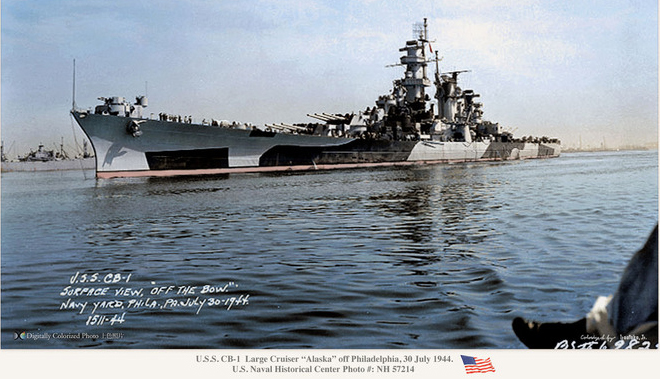
USS Alaska, colorized by Hirootoko Jr.
The Alaska class were the great white elephants of the US Navy. Their conception goes back to the beginning of the war, when all the treaties of limitation became obsolete. The US Navy therefore only released itself to study a new standard of conventional heavy cruiser (the term “conventional” designated during the cold war a ship not armed with missiles, but having artillery like main weapon.). The heavy cruiser genre was then brought to a logical degree of “upsizing” taking into account the reality that applied to all warships, ever larger and more powerful. A cruiser from 1880 rarely exceeded 100 meters and was limited to 5000 tons.
The Baltimore rose to 17,000 tons at full load, and with Prinz Eugen German, to 20,000 tons. However their main armament still remained 8 or 9 pieces of 203 mm. With the Alaska, the Admiralty intended to pass directly to the caliber 305 mm, that in force on the ships of line since 1890 and until 1916. Their distribution and the general physiognomy brought them much closer to the contemporary American battleships, so that they were sometimes placed in the obsolete category of “battle cruisers”, which took into account their speed -33 knots-and their armor-relatively light.
The influence of President Roosevelt on their design is often cited. Enthusiastic like the other Theodore of the beginning of the century by all that touched the navy, he wanted for the fleet a type of ship similar to that which made the pride of the Royal Navy, like Hood. It was also intended to make, like the German Germans, an invulnerable pirate of this “super cruiser”.
The Alaska class was to have 6 buildings, but soon, when it became apparent that the concepts underlying them were totally out of date, the other three, which should have been started in June 1943, were canceled. Two units were completed, Guam and Alaska launched in 1943, and Hawaii in March 1945, but only the first two were completed in June and September 1944. They proved in operation that they were a pretty bastard concept, finally, and having no adversaries after their war, expensive maintenance and in any case outclassed by missiles, these dinosaurs had no place in the fleet. They were put in reserve since 1961.

USS Alaska in july 1944
Characteristics
Displacement: 29,780 t. standard -34 253 t. Full Load
Dimensions: 246.43 m long, 27.76 m wide, 9.70 m draft
Machinery: 4 propellers, 4 GE turbines, 8 Babcock & Wilcox boilers, 150,000 hp.
Top speed: 33 knots
Armor: Belt 220, turrets 315, bridges 80-100, blockhouse 270 mm
Armament: 9 guns of 305 (3 × 3), 12 of 127 (6 × 2), 56 guns of 40 (14 × 4), 34 of 20 mm AA
Crew: 1,417


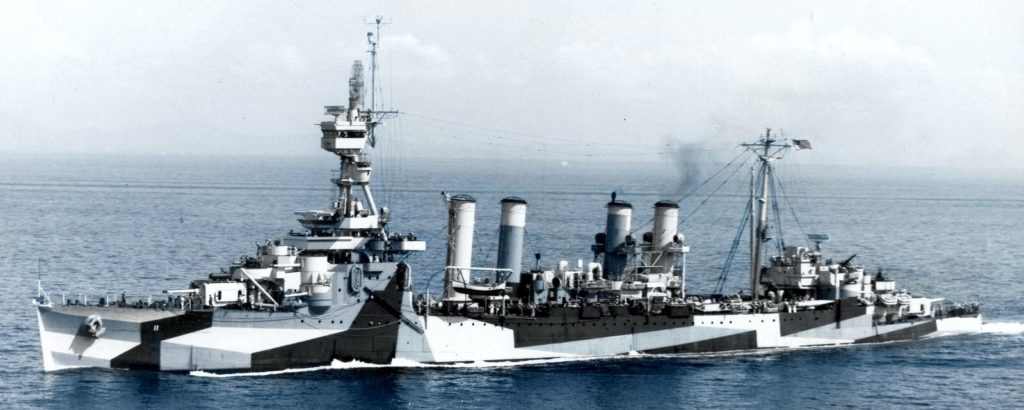


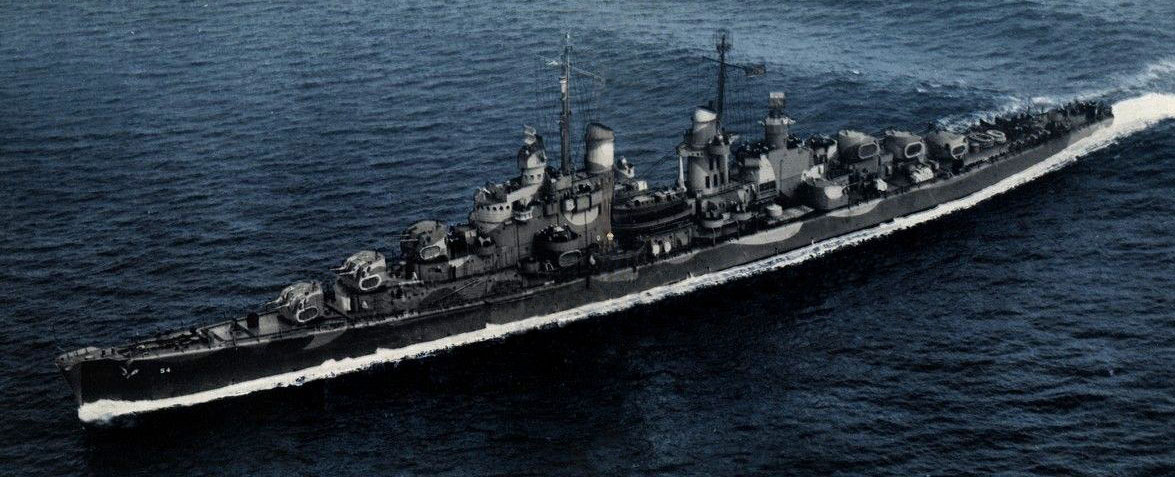
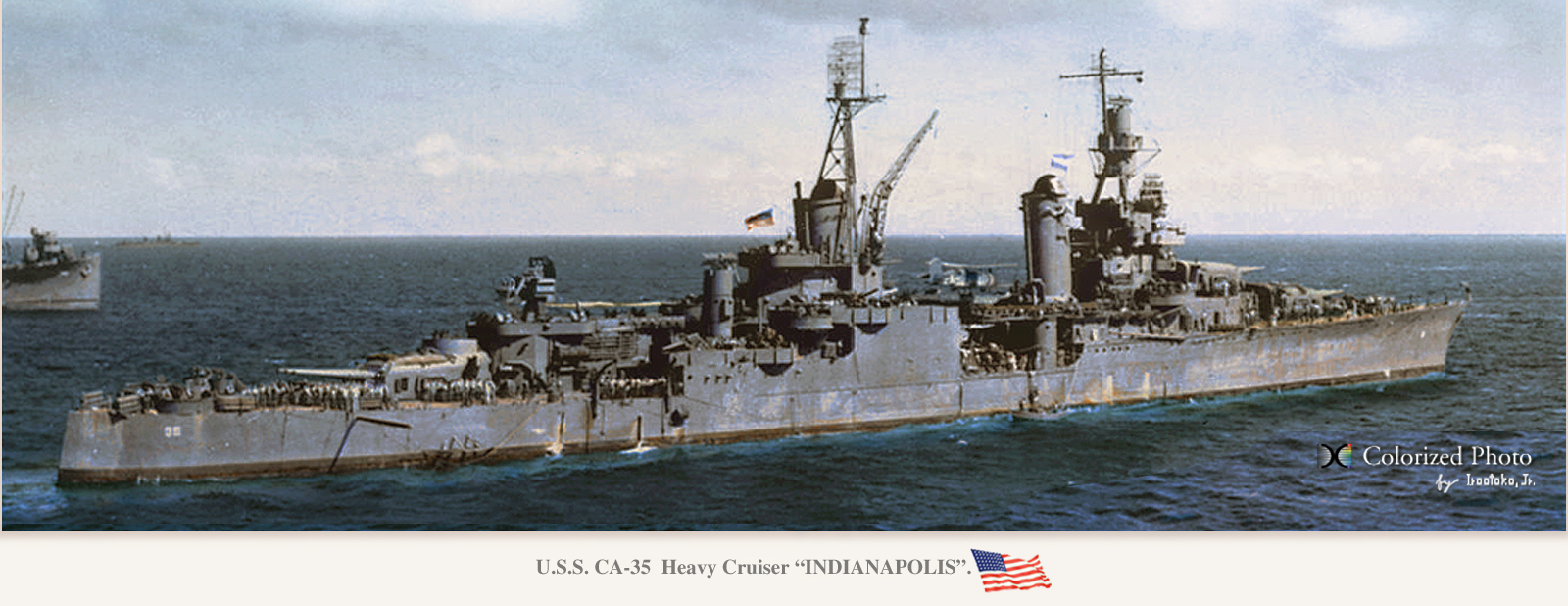
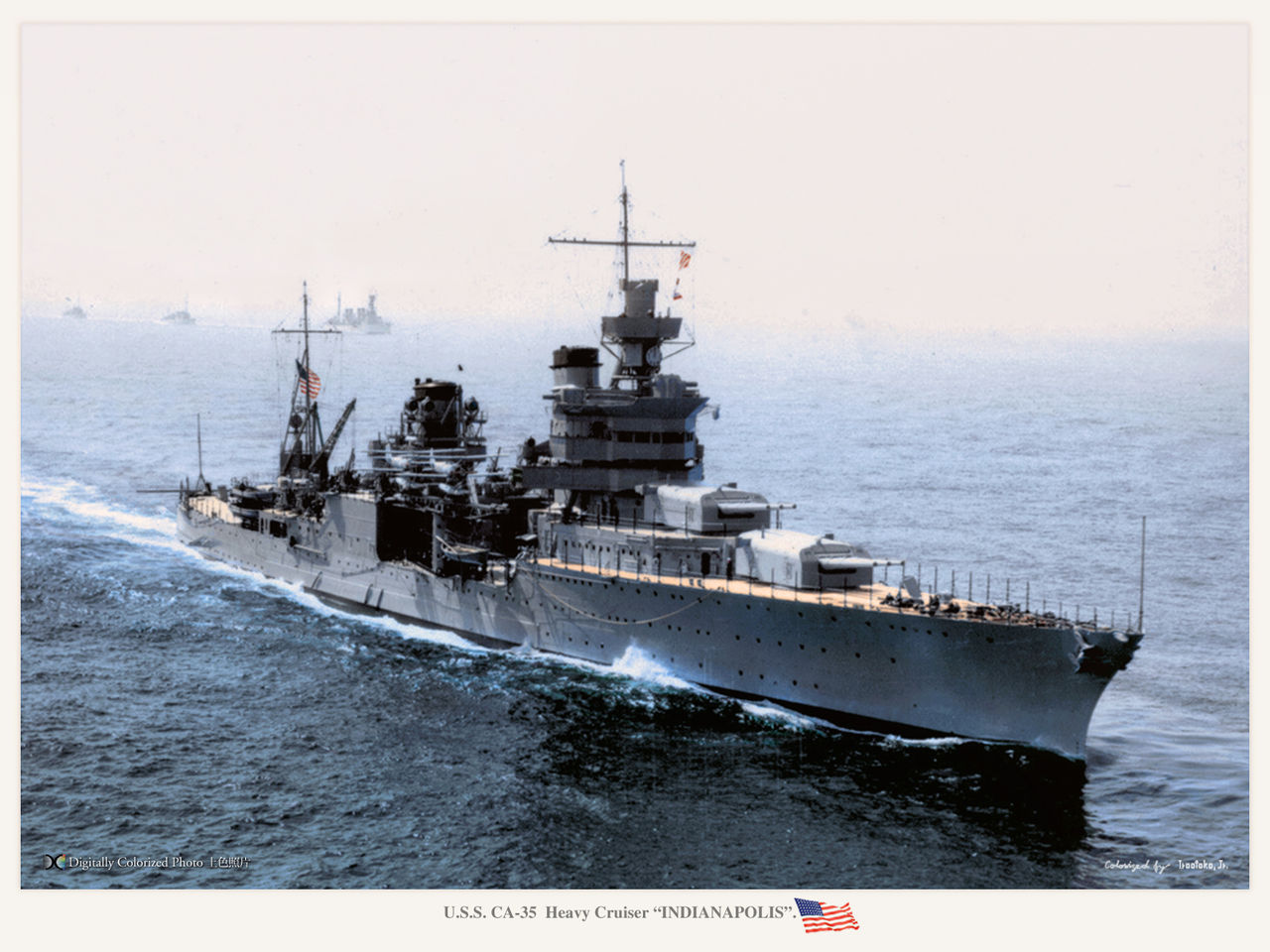
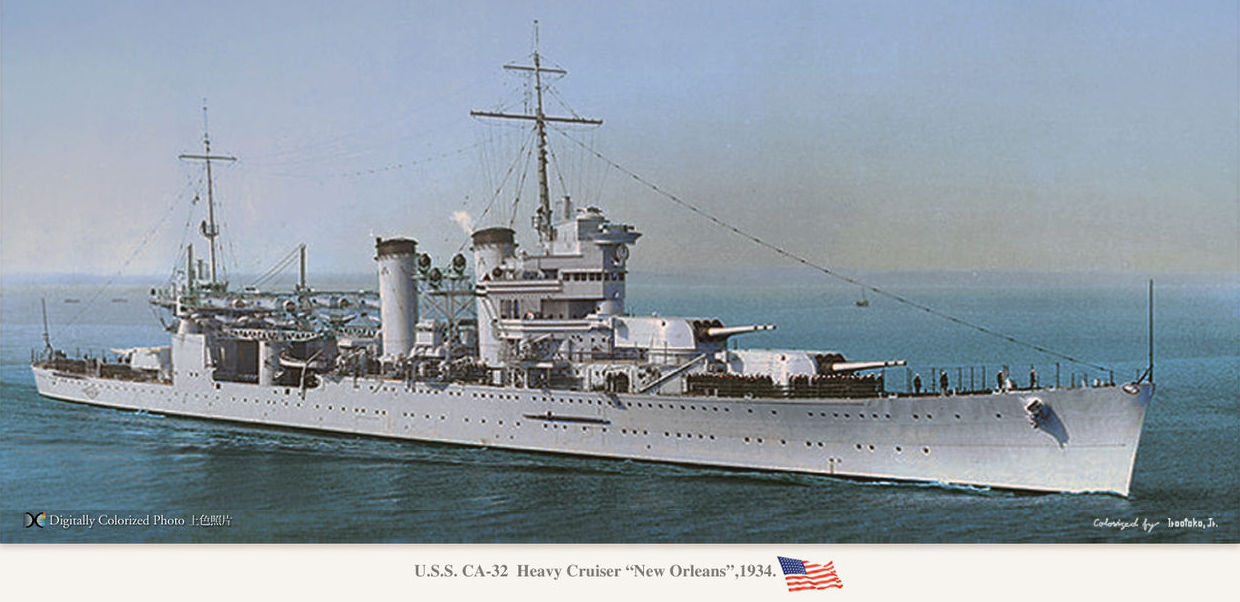

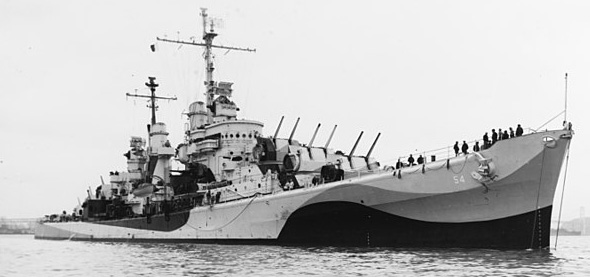
 Latest Facebook Entry -
Latest Facebook Entry -  X(Tweeter) Naval Encyclopedia's deck archive
X(Tweeter) Naval Encyclopedia's deck archive Instagram (@navalencyc)
Instagram (@navalencyc)





 French Navy
French Navy Royal Navy
Royal Navy Russian Navy
Russian Navy Armada Espanola
Armada Espanola Austrian Navy
Austrian Navy K.u.K. Kriegsmarine
K.u.K. Kriegsmarine Dansk Marine
Dansk Marine Nautiko Hellenon
Nautiko Hellenon Koninklije Marine 1870
Koninklije Marine 1870 Marinha do Brasil
Marinha do Brasil Osmanlı Donanması
Osmanlı Donanması Marina Do Peru
Marina Do Peru Marinha do Portugal
Marinha do Portugal Regia Marina 1870
Regia Marina 1870 Nihhon Kaigun 1870
Nihhon Kaigun 1870 Preußische Marine 1870
Preußische Marine 1870 Russkiy Flot 1870
Russkiy Flot 1870 Svenska marinen
Svenska marinen Søværnet
Søværnet Union Navy
Union Navy Confederate Navy
Confederate Navy Armada de Argentina
Armada de Argentina Imperial Chinese Navy
Imperial Chinese Navy Marinha do Portugal
Marinha do Portugal Mexico
Mexico Kaiserliche Marine
Kaiserliche Marine 1898 US Navy
1898 US Navy Sovietskiy Flot
Sovietskiy Flot Royal Canadian Navy
Royal Canadian Navy Royal Australian Navy
Royal Australian Navy RNZN Fleet
RNZN Fleet Chinese Navy 1937
Chinese Navy 1937 Kriegsmarine
Kriegsmarine Chilean Navy
Chilean Navy Danish Navy
Danish Navy Finnish Navy
Finnish Navy Hellenic Navy
Hellenic Navy Polish Navy
Polish Navy Romanian Navy
Romanian Navy Turkish Navy
Turkish Navy Royal Yugoslav Navy
Royal Yugoslav Navy Royal Thai Navy
Royal Thai Navy Minor Navies
Minor Navies Albania
Albania Austria
Austria Belgium
Belgium Columbia
Columbia Costa Rica
Costa Rica Cuba
Cuba Czechoslovakia
Czechoslovakia Dominican Republic
Dominican Republic Haiti
Haiti Hungary
Hungary Honduras
Honduras Estonia
Estonia Iceland
Iceland Eire
Eire Equador
Equador Iran
Iran Iraq
Iraq Latvia
Latvia Liberia
Liberia Lithuania
Lithuania Mandchukuo
Mandchukuo Morocco
Morocco Nicaragua
Nicaragua Persia
Persia San Salvador
San Salvador Sarawak
Sarawak Uruguay
Uruguay Venezuela
Venezuela Zanzibar
Zanzibar Warsaw Pact Navies
Warsaw Pact Navies Bulgaria
Bulgaria Hungary
Hungary

 Bundesmarine
Bundesmarine Dutch Navy
Dutch Navy Hellenic Navy
Hellenic Navy Marina Militare
Marina Militare Yugoslav Navy
Yugoslav Navy Chinese Navy
Chinese Navy Indian Navy
Indian Navy Indonesian Navy
Indonesian Navy JMSDF
JMSDF North Korean Navy
North Korean Navy Pakistani Navy
Pakistani Navy Philippines Navy
Philippines Navy ROKN
ROKN Rep. of Singapore Navy
Rep. of Singapore Navy Taiwanese Navy
Taiwanese Navy IDF Navy
IDF Navy Saudi Navy
Saudi Navy Royal New Zealand Navy
Royal New Zealand Navy Egyptian Navy
Egyptian Navy South African Navy
South African Navy






























 Ukrainian Navy
Ukrainian Navy dbodesign
dbodesign